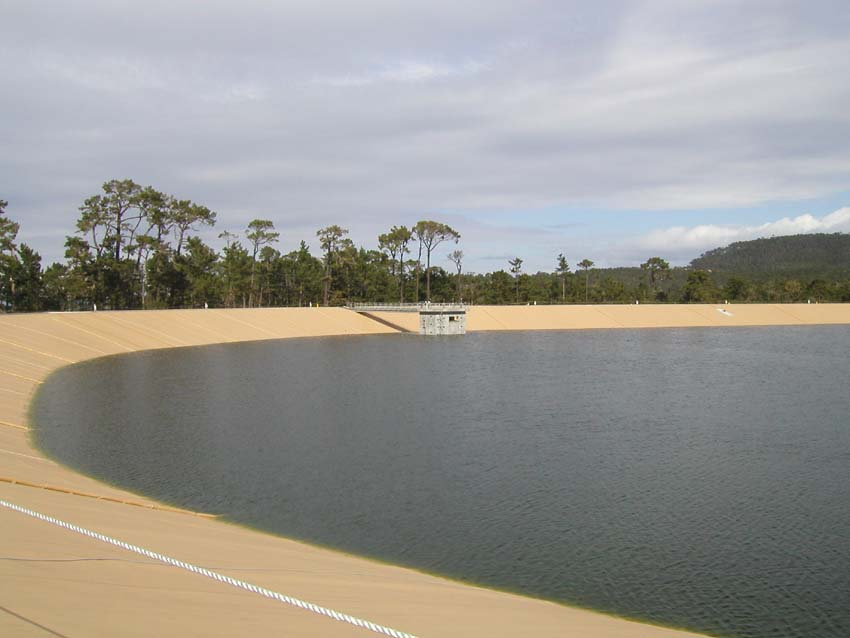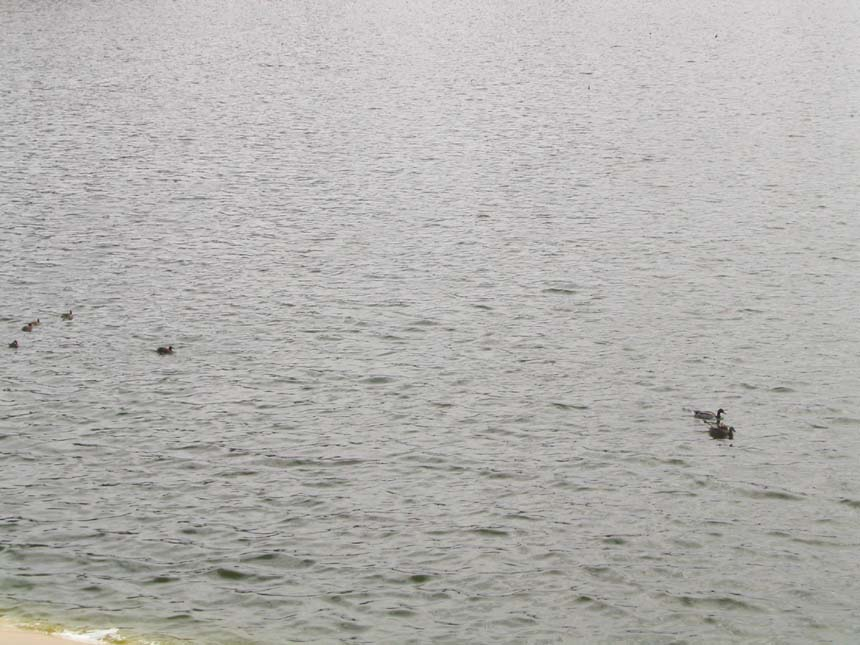Forest Lake Reservoir Project and Photos

Overview
A helicopter releases water siphoned from Forest Lake reservoir during the project’s dedication in September (see our on-line video of the demonstration). The technique was crucial in extinguishing a July wildland fire in the Forest.
In December 1998, the District purchased the Forest Lake Reservoir from California-American Water Company (Cal-Am) pursuant to a quid-pro-quo agreement. The reservoir is currently being rehabilitated and new improvements are being constructed to meet the State Water Resources Department Division of Safety of Dams (DSOD) requirements. Upon completion of the construction, the reservoir will provide 325 acre feet of storage capacity. It will be filled with recycled water during winter months when there is excess production at the Carmel Area Wastewater District’s treatment plant. Stored recycled water will be used during summer months when the irrigation demands exceed the production, thereby further reducing the use of potable water.
The Forest Lake Reservoir improvements include installation of a hypalon liner with a thickness of 65 mil (.065 inch) and leak detection system on the interior reservoir surface, reconstruction of an exterior section of the north embankment, construction of new concrete intake/outlet structure and installation of new pipelines for connection between the new reservoir and algae removal treatment facility and the existing distribution system and overflow line. The new treatment facility includes three microstrainers to remove algae, two pumps with the peak demand capacity to pump 4.5 million gallons per day to the distribution system, instrumentation controls integrated with the existing Supervisory Control and Data Acquisition (SCADA) system and chemical process equipment for adjusting pH levels and disinfection of recycled water prior to entering the distribution system. The existing outlet of the overflow line will be extended 200 feet and an energy dissipation structure will be constructed at Sawmill Gulch creek below Colton Road.
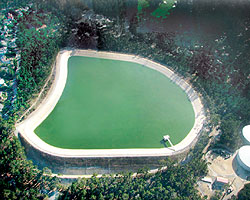
The Forest Lake Reservoir stores recycled water for irrigation and firefighting, and also helps protect habitat in the Carmel River and ocean.
On March 16, 2005, the District awarded $10,936,000 contract to the Anderson Pacific Engineering Construction, Inc. for construction of the improvements. Construction started in late March 2005 and is anticipated to be completed in the spring of 2006. This schedule will allow the reservoir to be filled with recycled water over the wet season to be used in the 2006 irrigation season. Construction management is being provided by E2 Consulting Engineers pursuant to a $978,500 contract. The project is being financed entirely by the sale proceeds of a portion of Pebble Beach Company’s water entitlements obtained in return for financially guaranteeing the first phase of the Reclamation project. Water entitlements are offered to the residential users within Pebble Beach.
Construction Progress Report April 2006
Anderson Pacific Engineering Construction, Inc. (Anderson Pacific) made good progress on construction of the Forest Lake Reservoir Components of the Expanded CAWD/PBCSD Wastewater Reclamation Project. The contractor performed initial testing of the microstrainers, plant feed pumps, chemical feed systems for chlorine injection and pH adjustment and miscellaneous mechanical and electrical equipment in the chemical building. Instrumentation subcontractor Tesco Controls installed programming for the instrumentation controls located at the chemical and maintenance department buildings and calibrated a number of measuring devices required for automatic control of the treatment facility. Recycled water from the reservoir is available for the distribution system through manual operation of the treatment facilities.
The reservoir is filled with recycled water to the permitted storage capacity of 325 acre-feet or 105 million gallons. No water has been observed to date from the leak detection system below the liner. Water stored in the reservoir initially had a green tint indicating the presence of algae, which was confirmed by high chlorophyll and pH concentrations measured in water sample testing. Poor water clarity in the reservoir was confirmed by a Secchi disc measurement of less than 18 inches. Within the past two weeks the water in the reservoir become clearer with a Secchi disc measurement of approximately 6 feet and the green tint was replaced with a light brown tint. Water samples are collected weekly and chlorophyll and pH concentrations also dropped significantly.
Professor Alex Horne, Professor Emeritus, Ecological Engineering, University of California at Berkeley and an expert limnologist, participated in the design of algae control measures including the mixer and air flow bubbler systems. Professor Horne recently visited the project and indicated all reservoirs experience considerable fluctuations in algal growth levels initially. He believes the initial green color was a large concentration of small green algae. He collected water samples for microscopic examination, observed a species of rotifer that eat or graze on algae was abundant and the rotifers were healthy with full green guts. Algal growth occurs in the upper layer of the reservoir exposed to sunlight. Algae control measures were designed to keep the reservoir water moving and keep the algae from settling in the upper layer. Professor Horne has recommended adding a species of crustacean zooplankton that graze at a rate about 100 times greater than rotifers to help keep the reservoir balanced naturally. While the application of chemicals like copper sulfate or chlorine is a very effective method of killing algae, the algae grazers are also killed and the natural balance of the reservoir goes back to square one.
Anderson Pacific has earned $10,977,046 or 94 % of the revised construction contract amount of $11,656,726. E2 Consulting Engineers has earned $929,356 or 95 % of the budget of $978,420 for construction management services.
Additional Work
Change order number 11 was executed by the General Manager in April increasing the sum of the construction contract by $125,000 as described below.
Change Order No. 11 (+$125,000)
- Install four security cameras mounted on two new poles near the outlet structure and on the chemical building. Signals will be transmitted wirelessly to from the remote locations to the chemical building (+$65,000)
- Install fiber optic line between Forest Lake chemical building and maintenance building. (+$60,000)
Ten change orders totaling $720,726 have been executed to date increasing the contract value to $11,656,726. The Board previously authorized the General Manager to approve change orders for this project within an aggregate limit of $775,000, or 7% of the original contract amount of $10,936,000. The four-way construction and operations agreement requires the consent of the Pebble Beach Company prior to reimbursement for any changes above the 5 % contingency level.
Construction Progress by Photos
The contractor mobilized and commenced excavation.
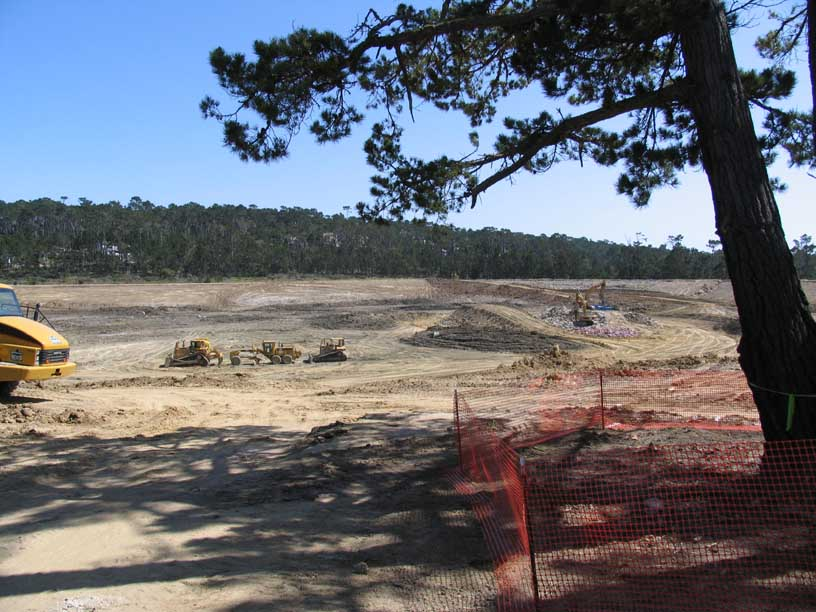
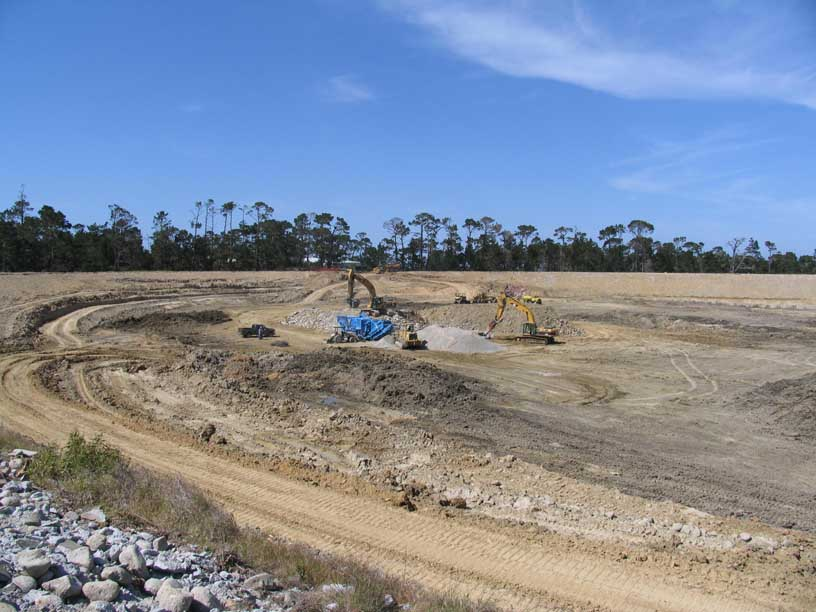
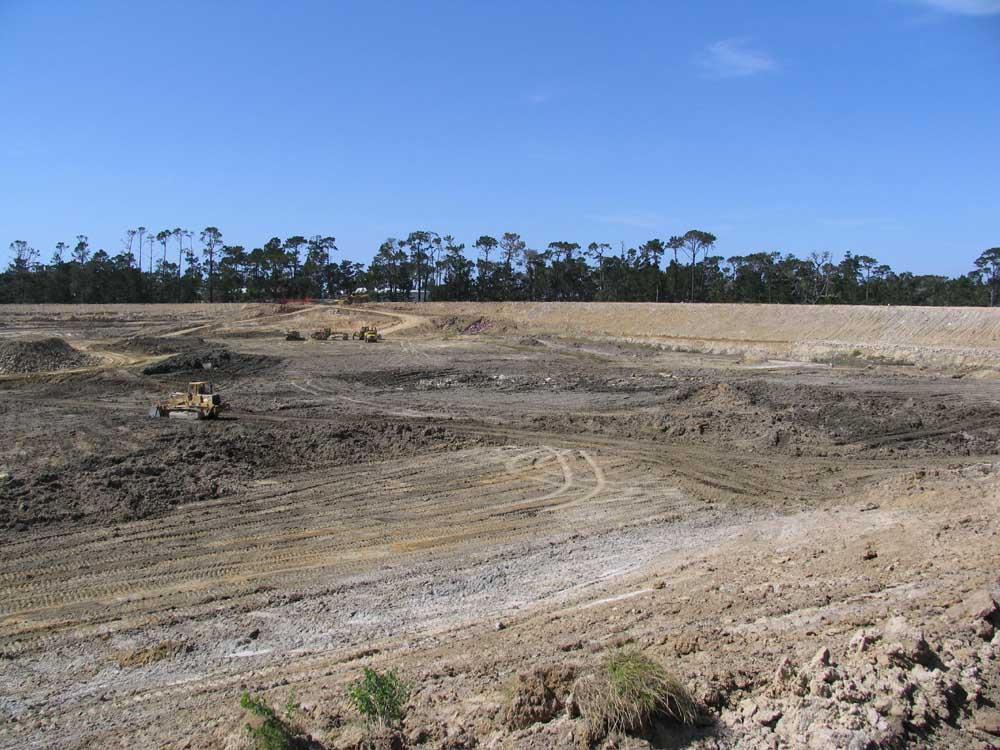
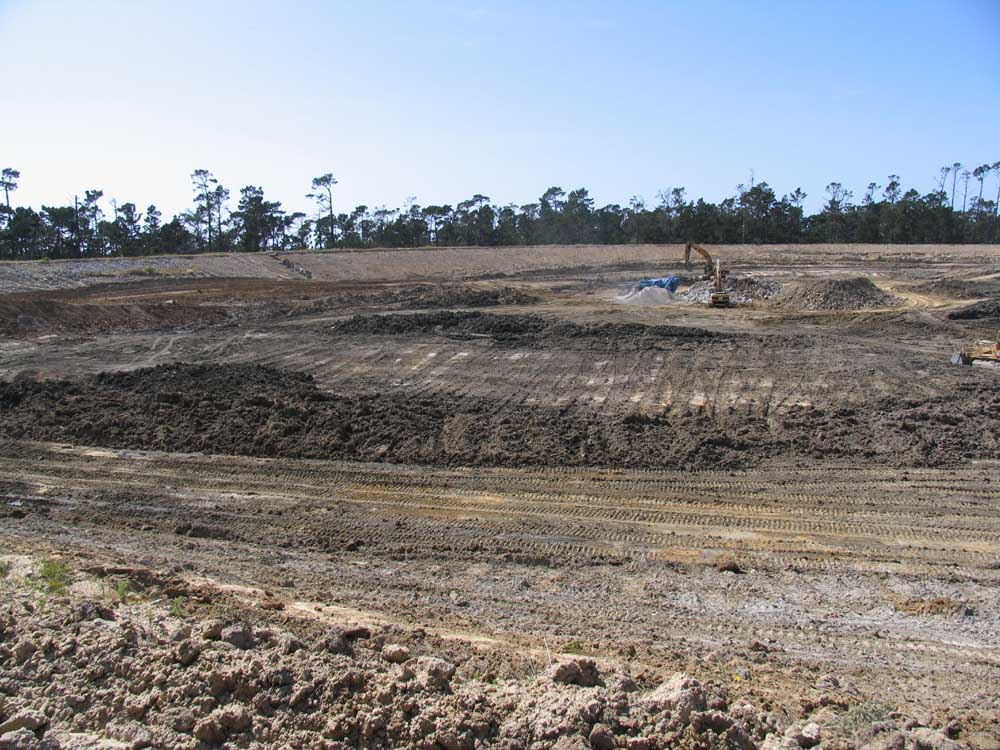




The interior surface was cleared and grubbed. Excavation at the treatment plant area commenced. Unforeseen underground conditions were encountered while grading the historical low spot and while removing the concrete apron around the perimeter. Unsuitable wet material encountered at the low spot at depths of up to 11 feet was removed and regraded with suitable material approved by California Department of Water Resources, Division of Safety of Dams (DSOD).
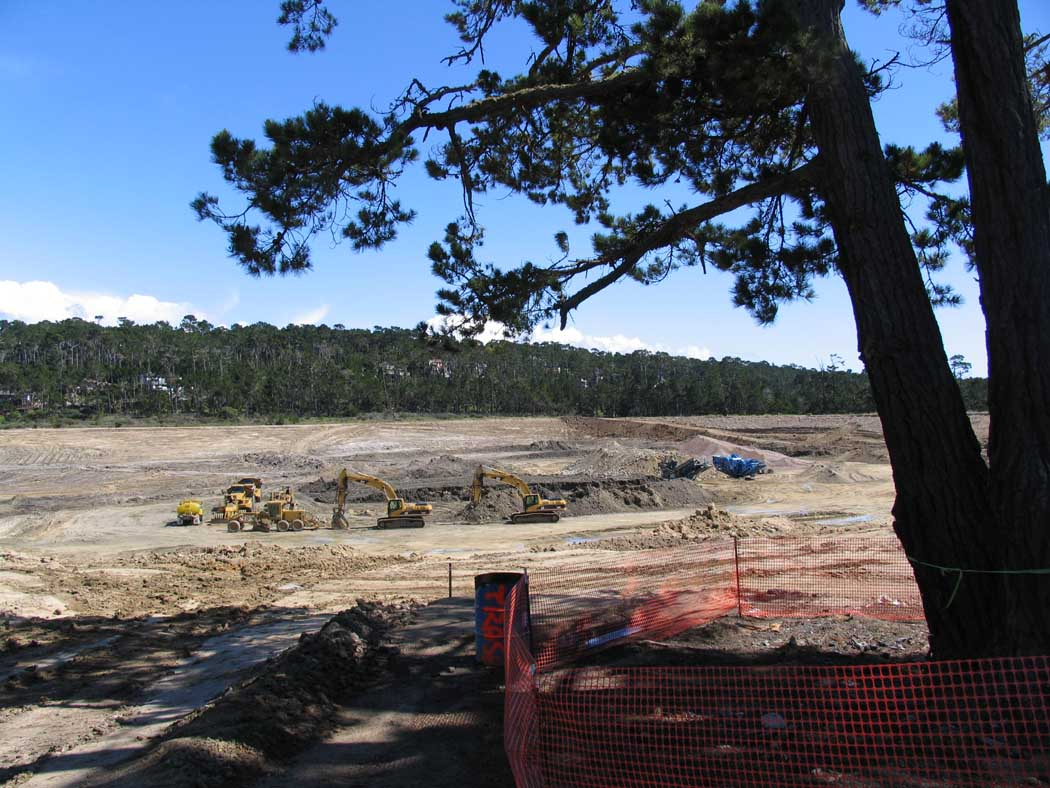
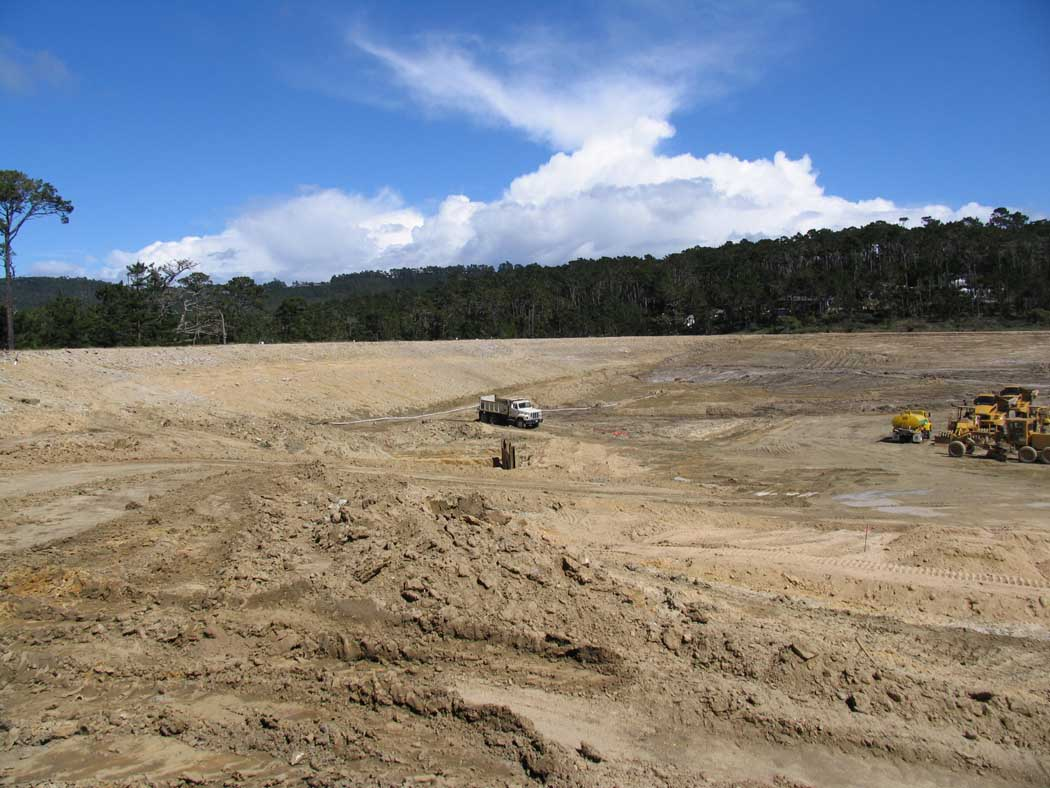
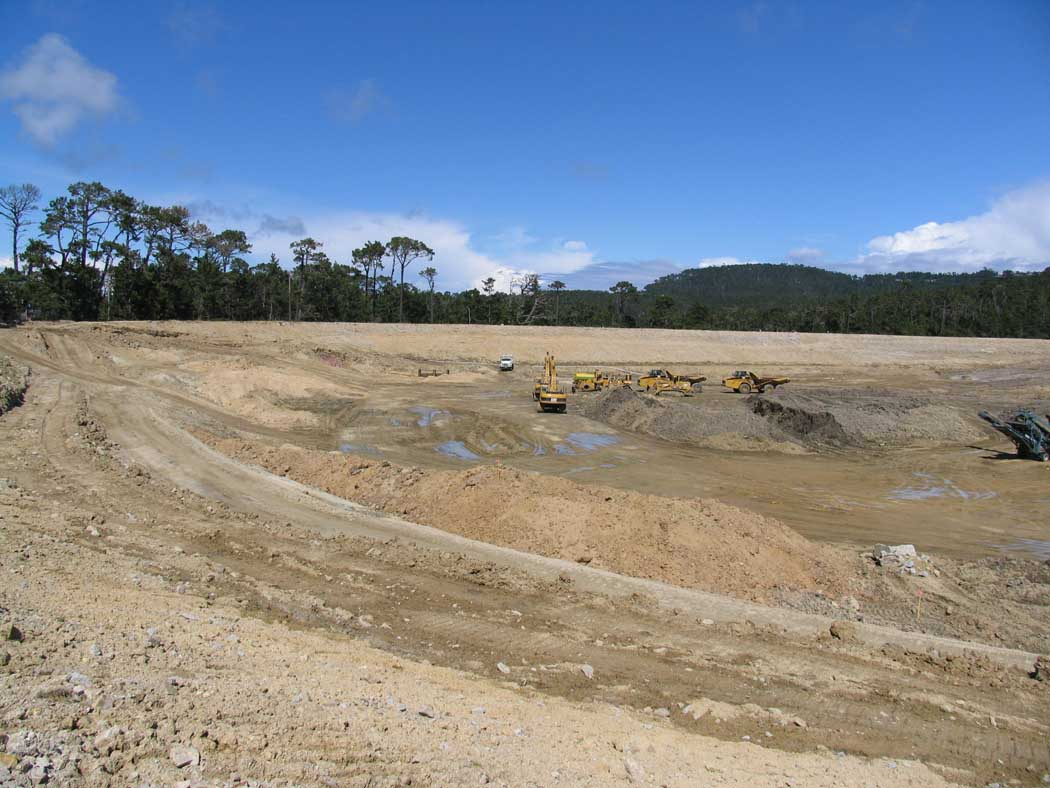





Construction of the backwash structure at the treatment plant area started. Retired Board member William R. Gianelli visited the construction site on May 3, 2005.
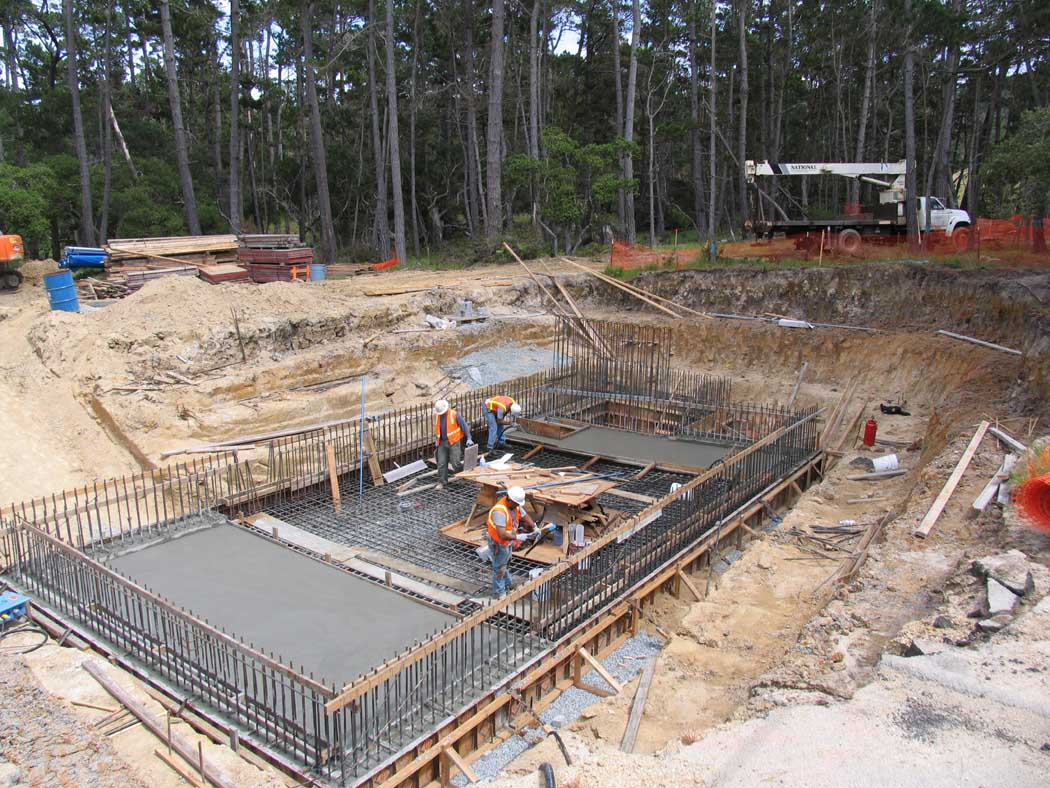
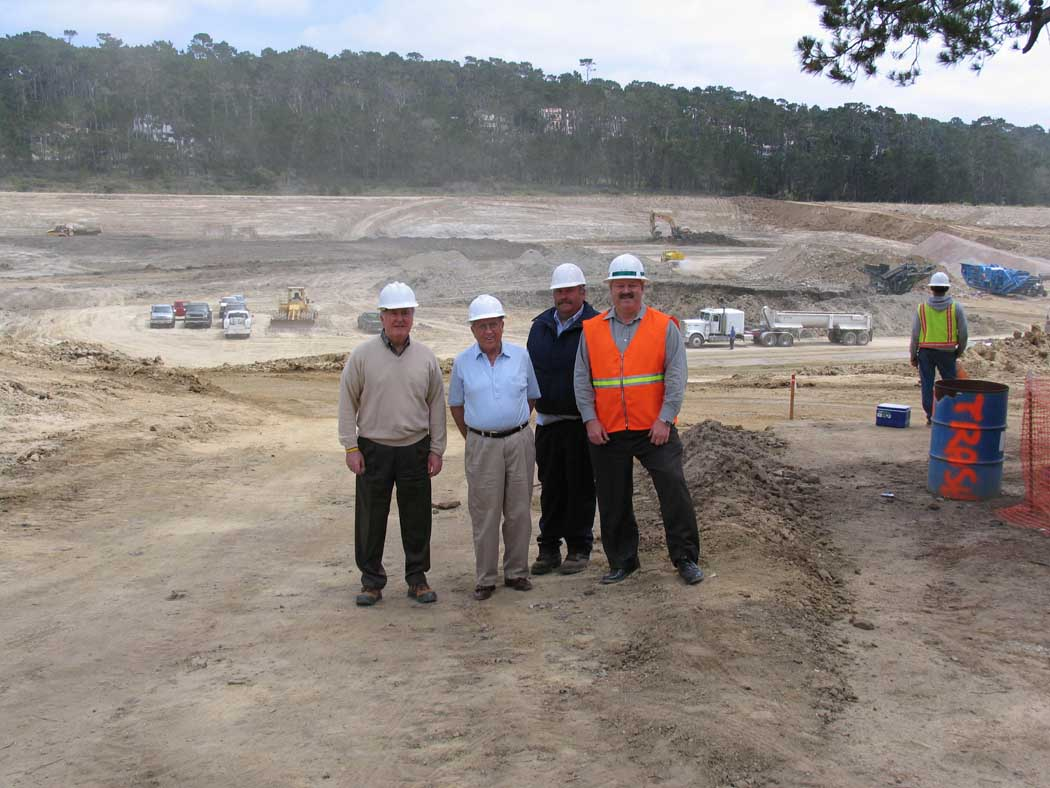
The contractor completed the clearing and grubbing operations, and commenced rough grading on the interior of the reservoir with suitable material approved by DSOD.
Stone cobbles discovered under the perimeter concrete apron increased the work for surface demolition. Unsuitable wet material was removed at the low spot.
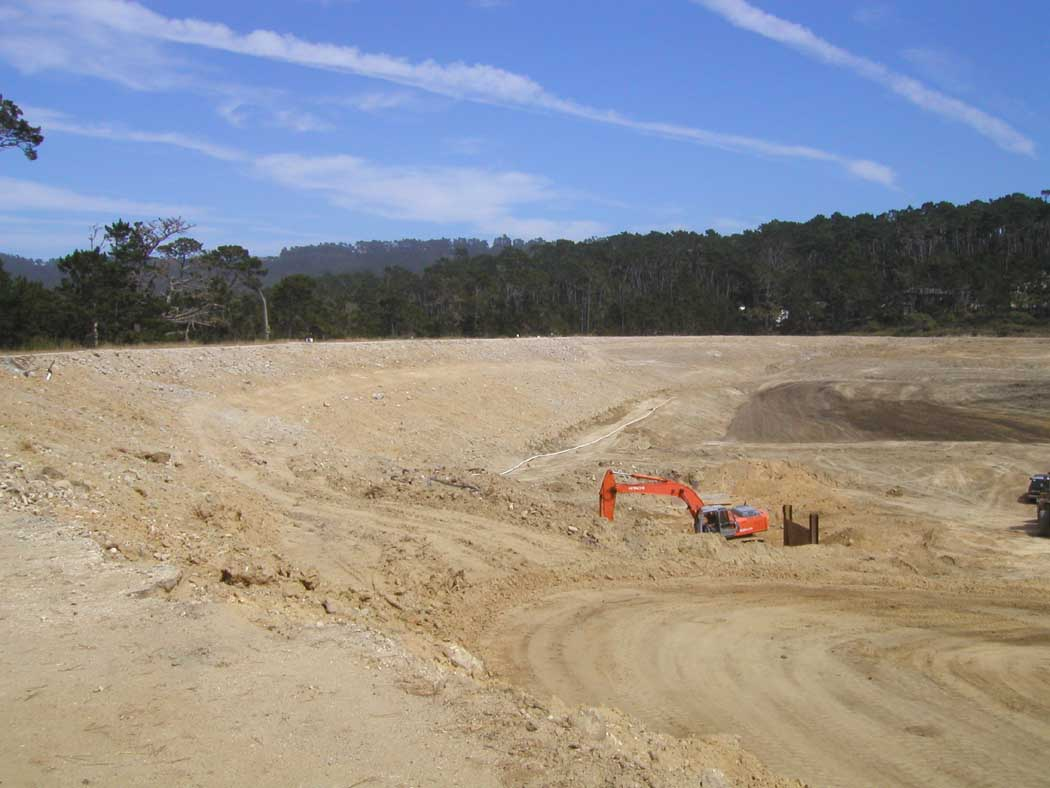
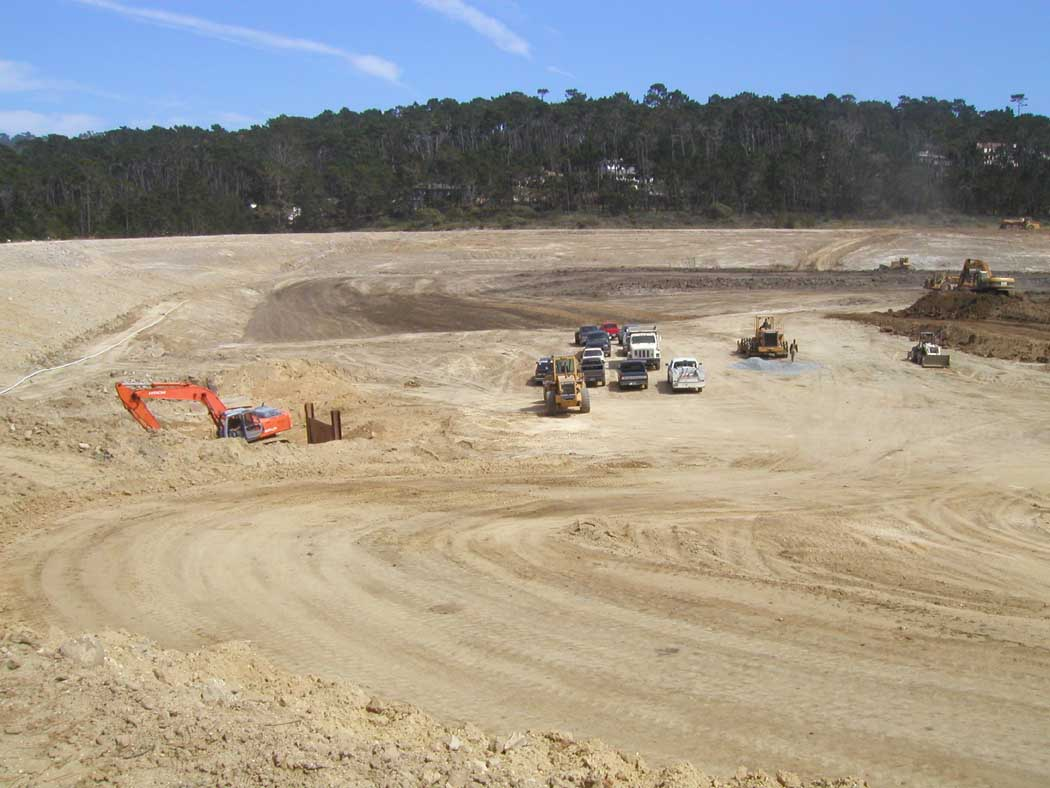
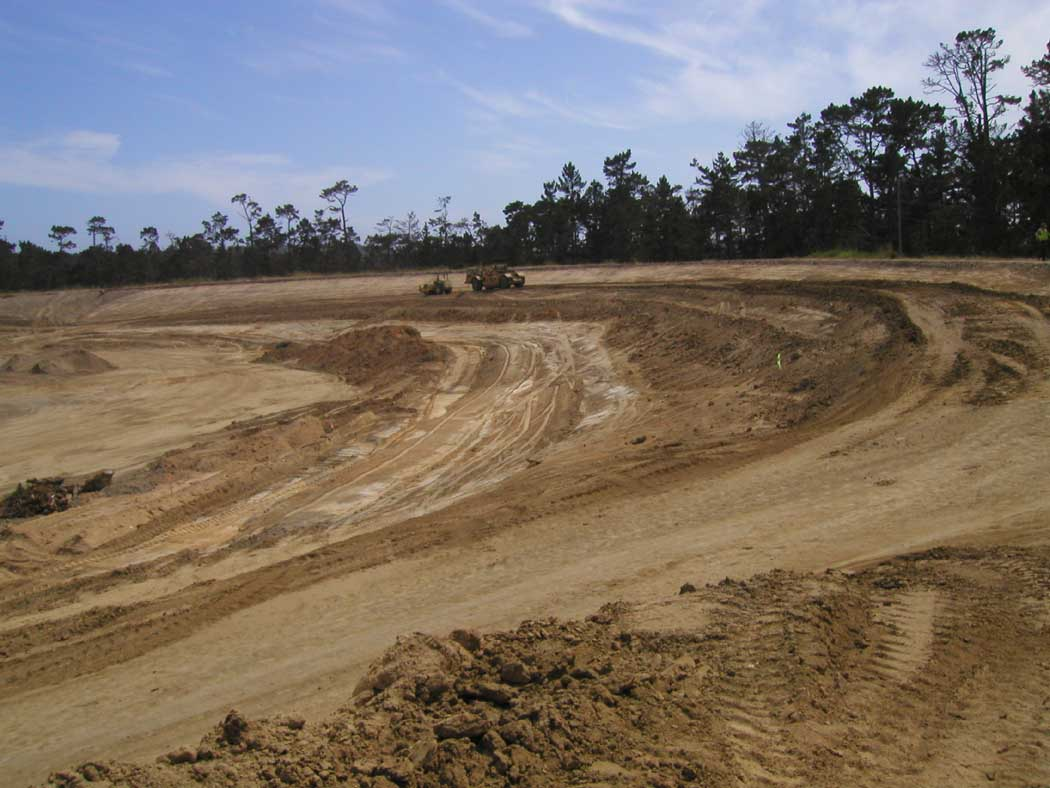
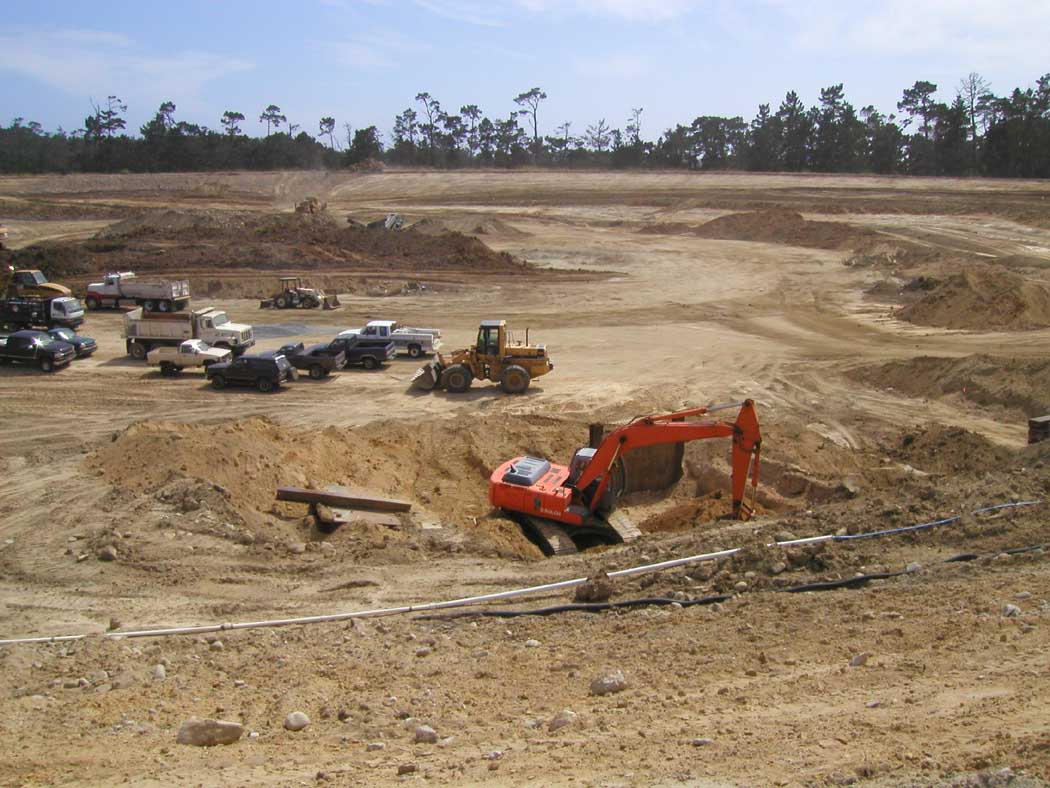




Concrete placement at the backwash structure was completed. DSOD field engineer inspected the keyway excavation for the outlet structure.

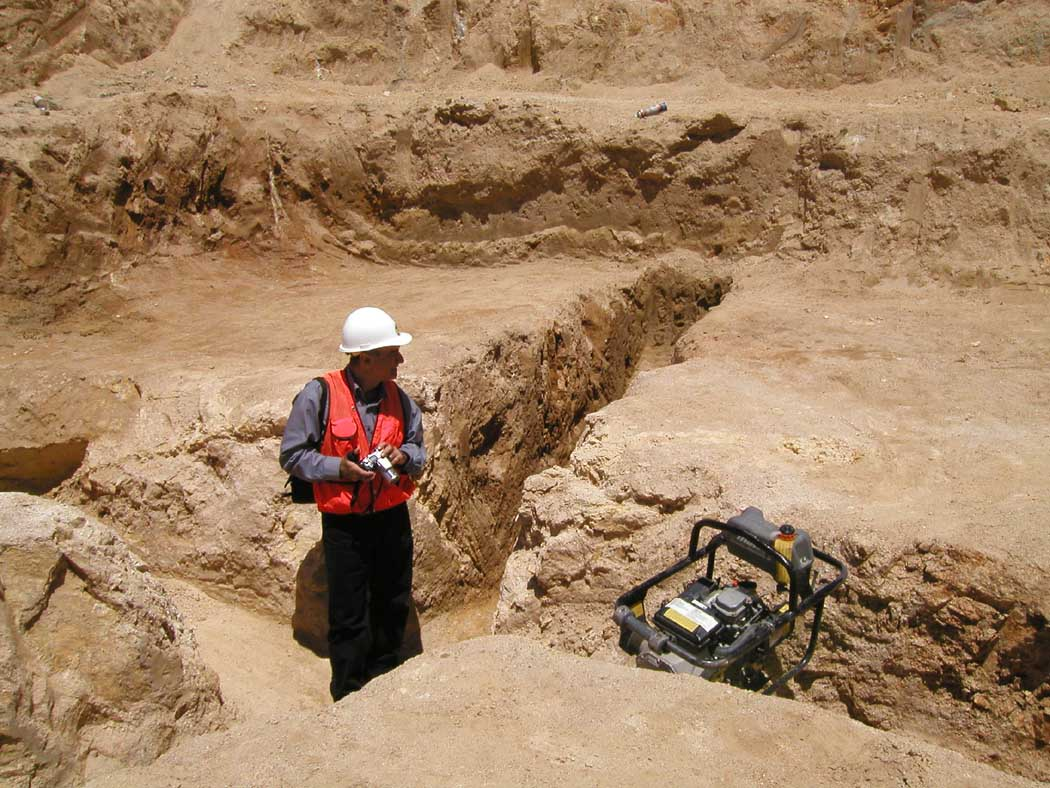
Contractor started construction of the outlet structure and the concrete anchor for the lining system along the perimeter of reservoir at the top of the embankment.
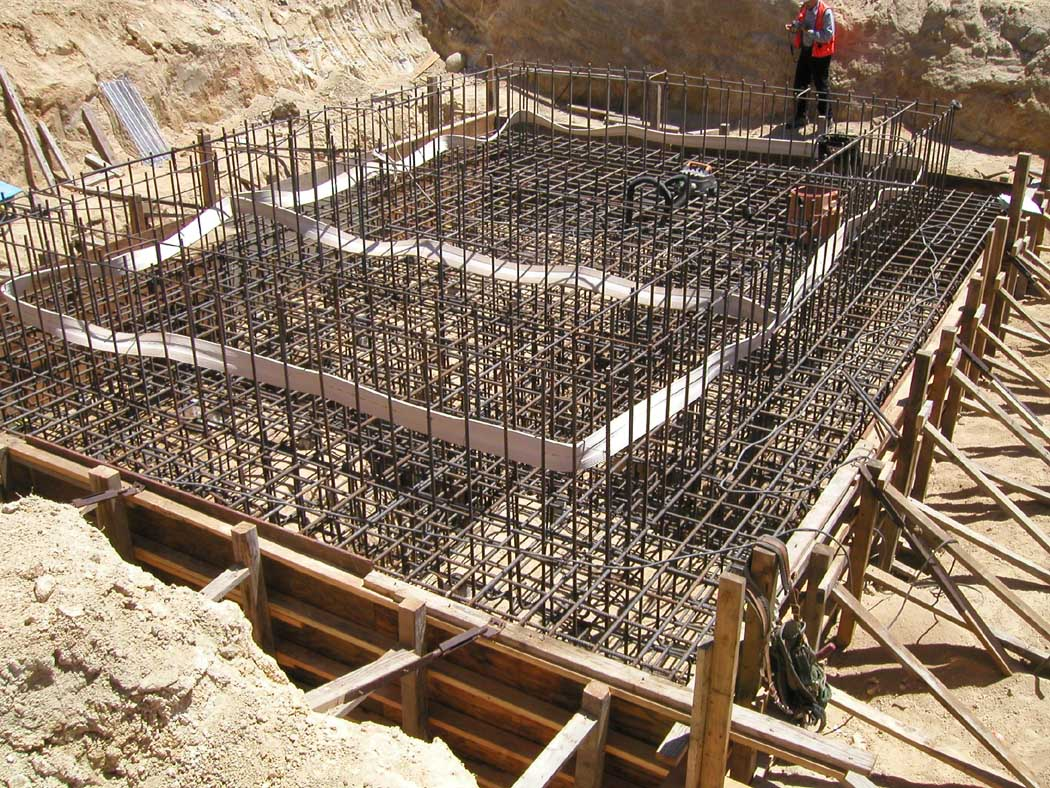
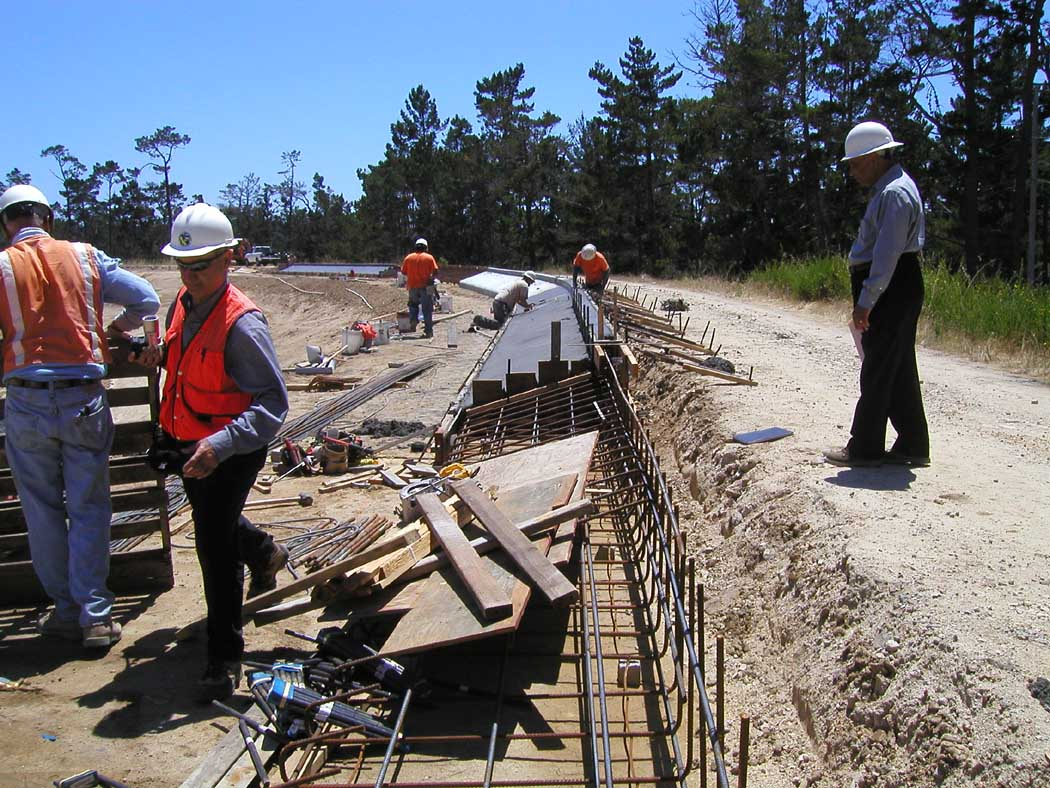
Keyway excavation at the exterior slope of the north embankment started.

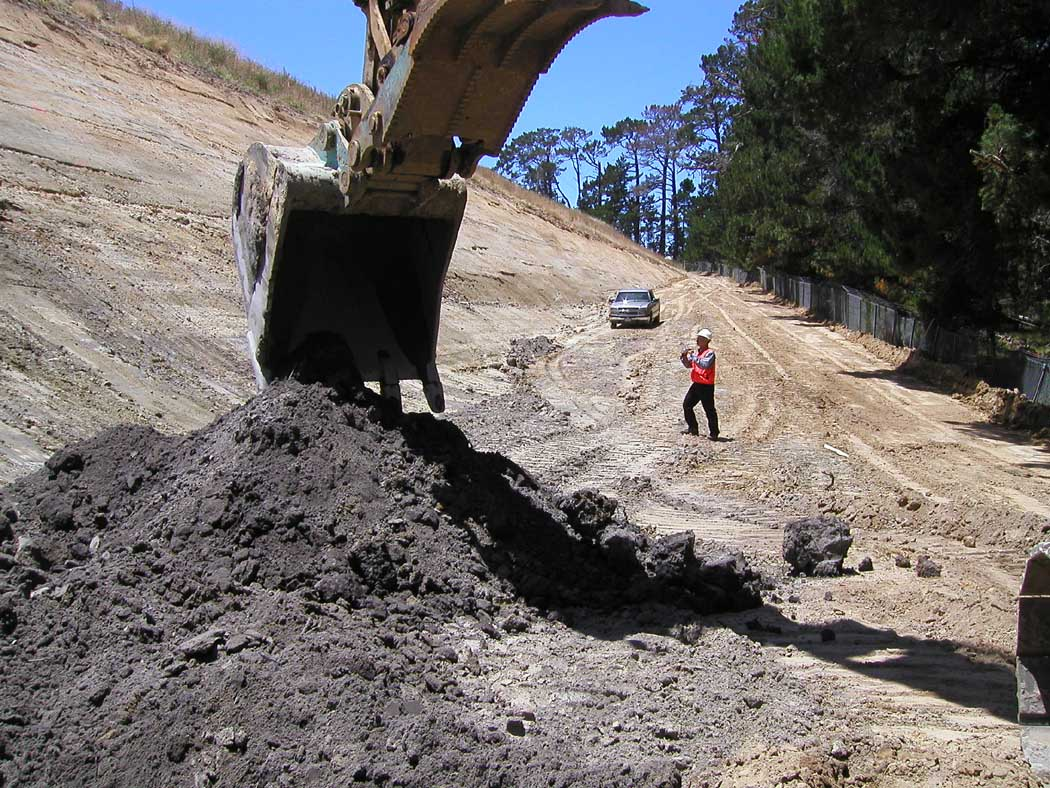
Contractor completed foundation and lower wall section as well as steel framing of the outlet structure. Also completed was 75% of the rough grading work on the interior.
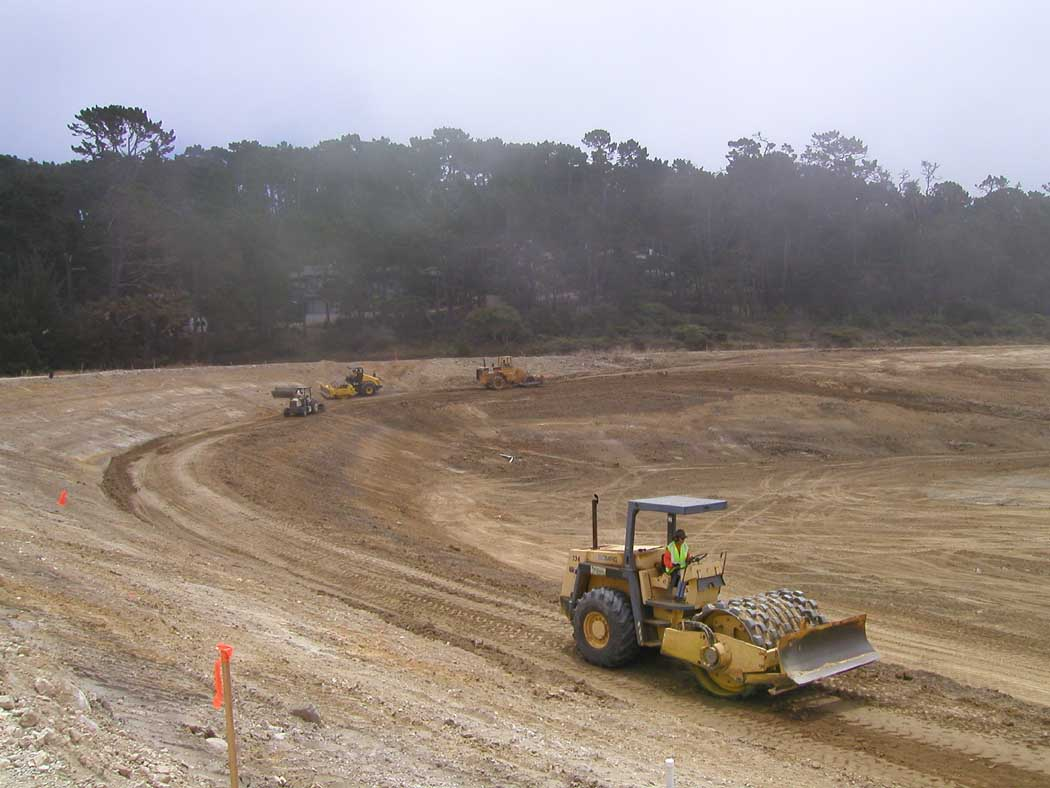
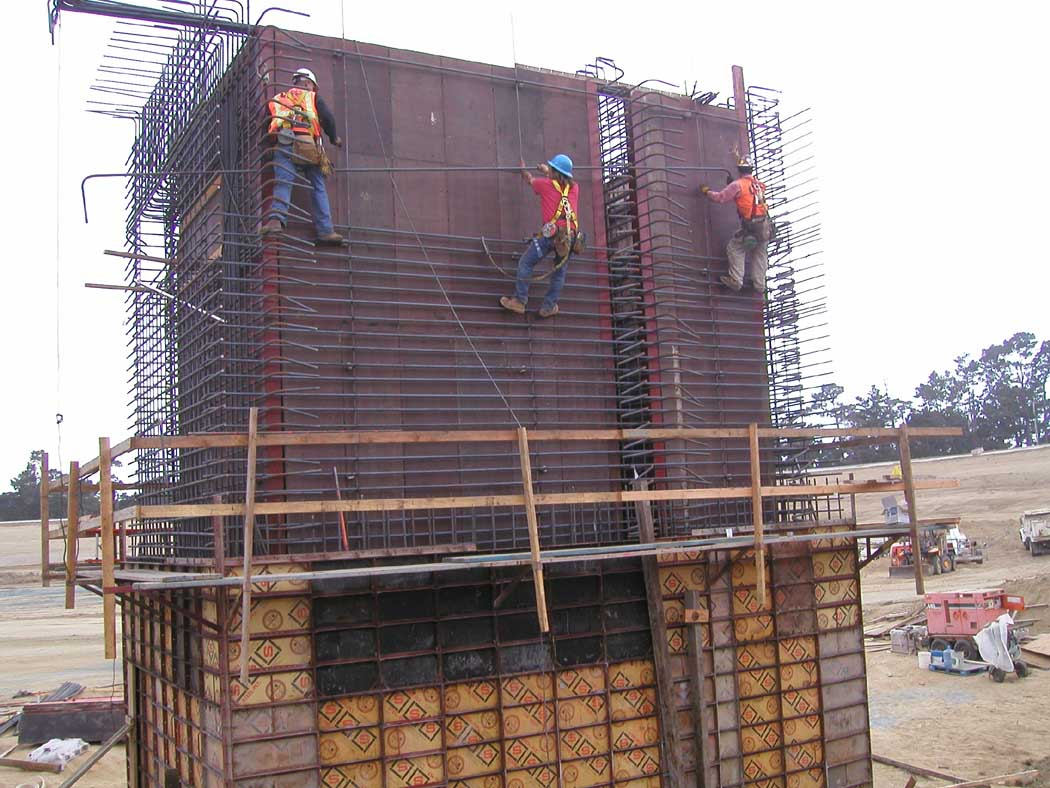
Keyway excavation at the exterior slope of the north embankment was completed.

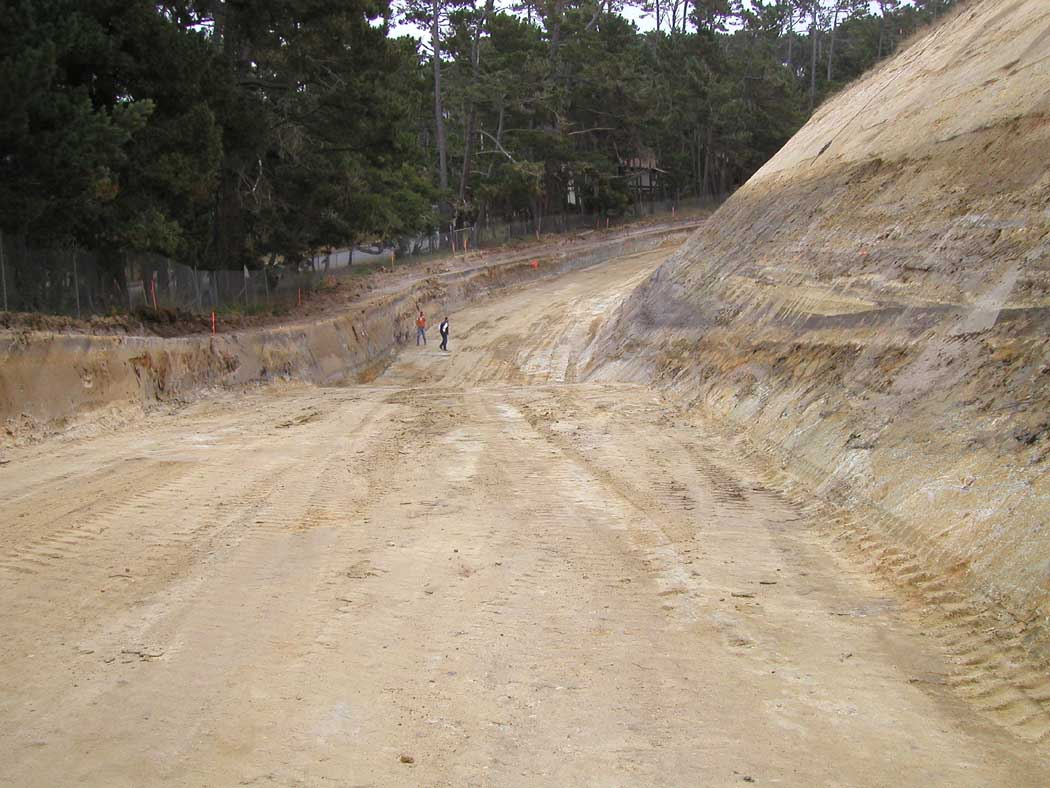
Contractor completed tunnel jacking and boring of the 48-inch steel casing and 36-inch concrete emergency drain pipe through the reservoir embankment for the overflow outlet line.
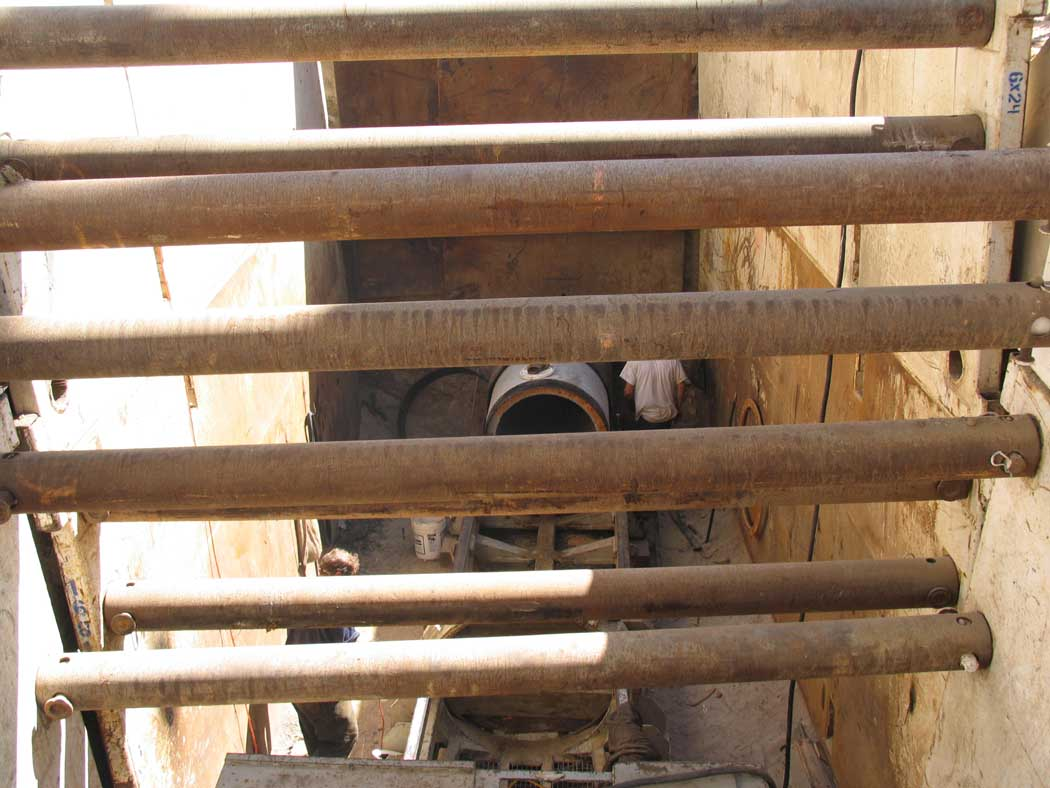
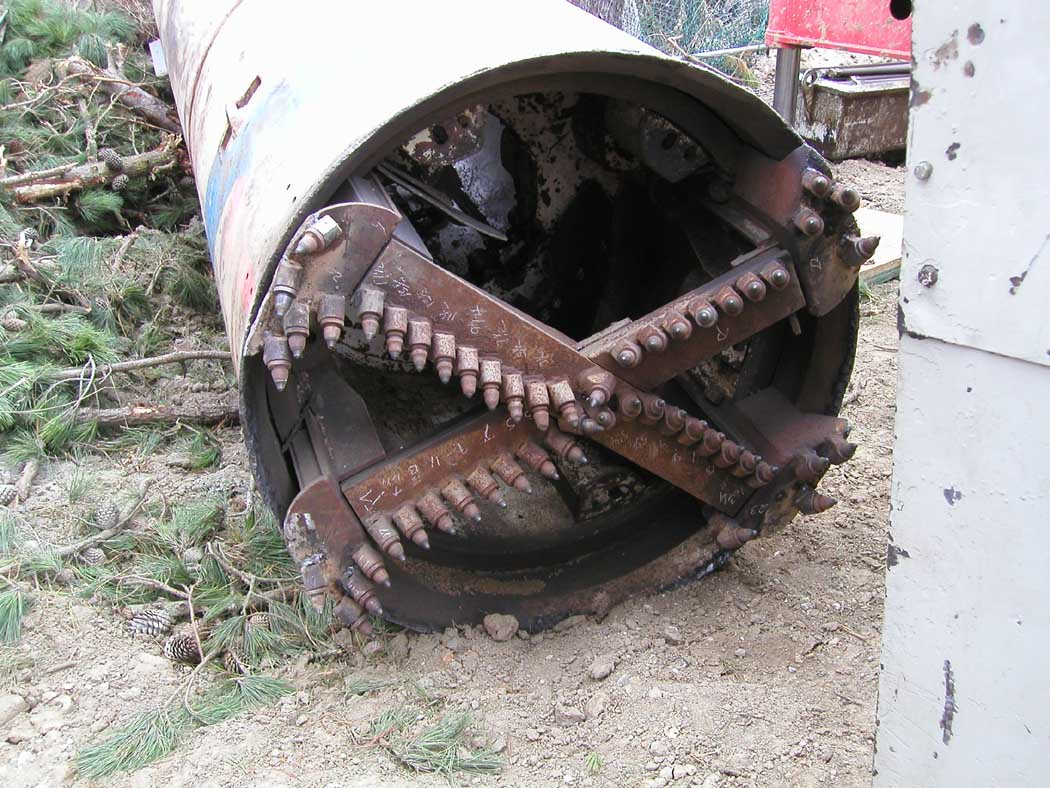
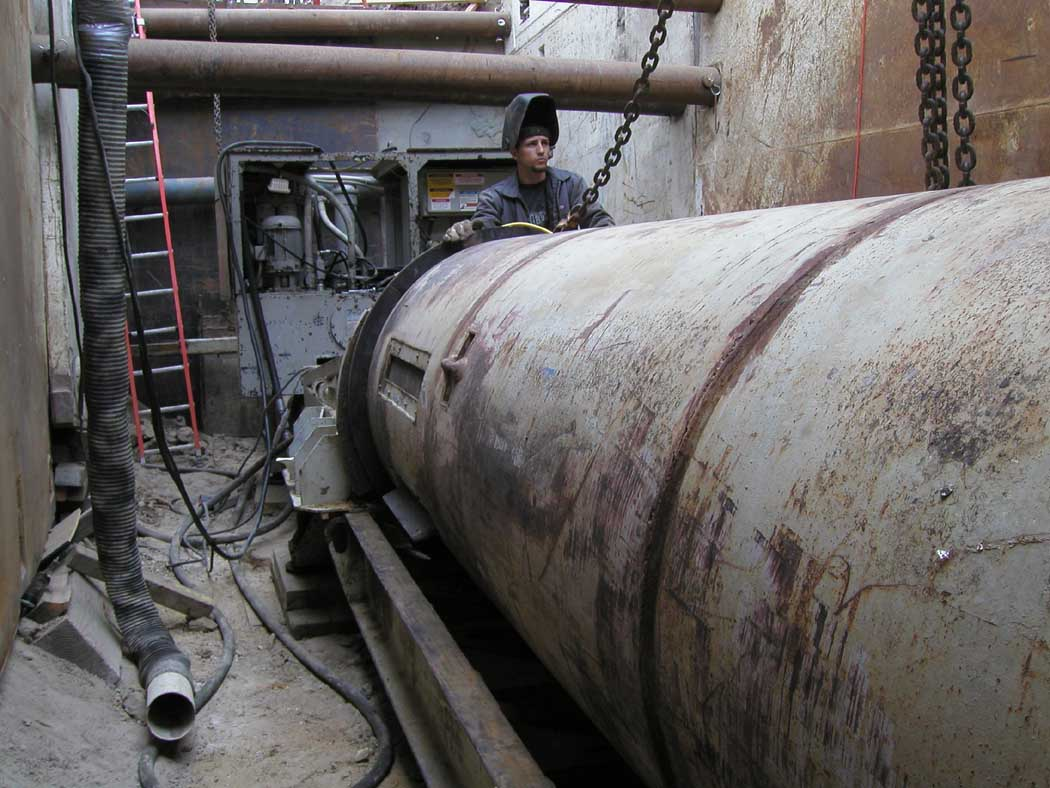
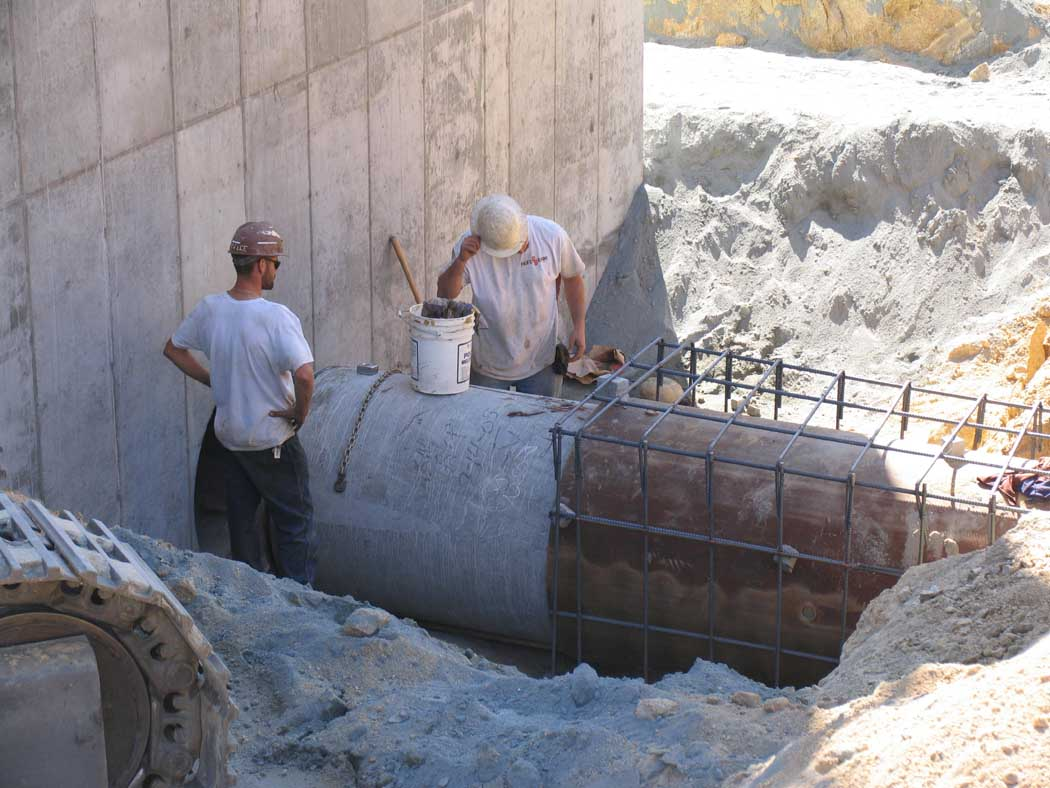




At the north embankment keyway fill and chimney drain construction was completed. Construction of the buttress fill started.
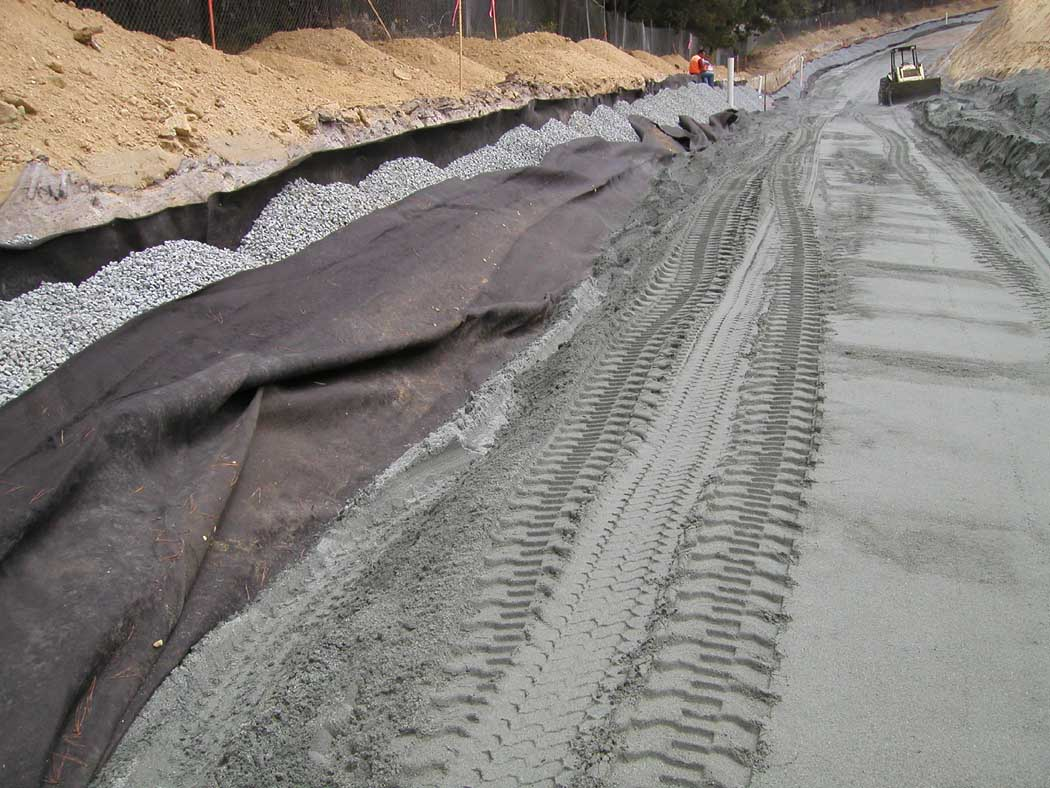
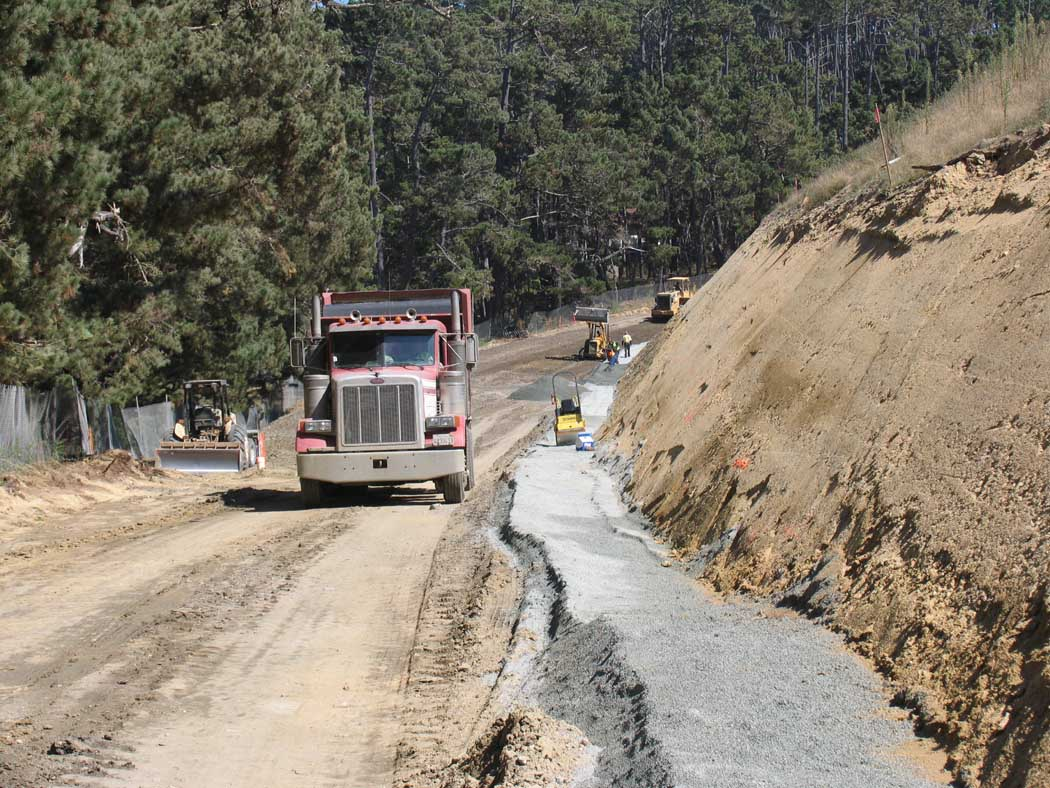
Steel placement for the roof of the outlet structure and grading for the chemical building pad were completed.
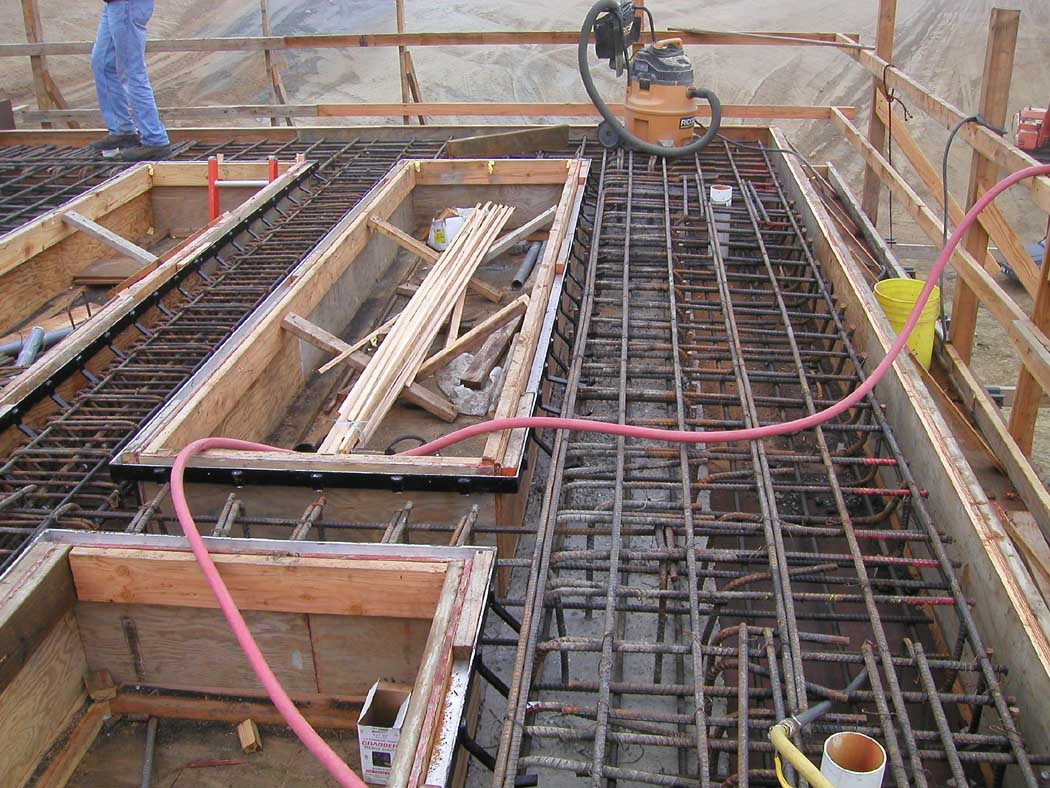
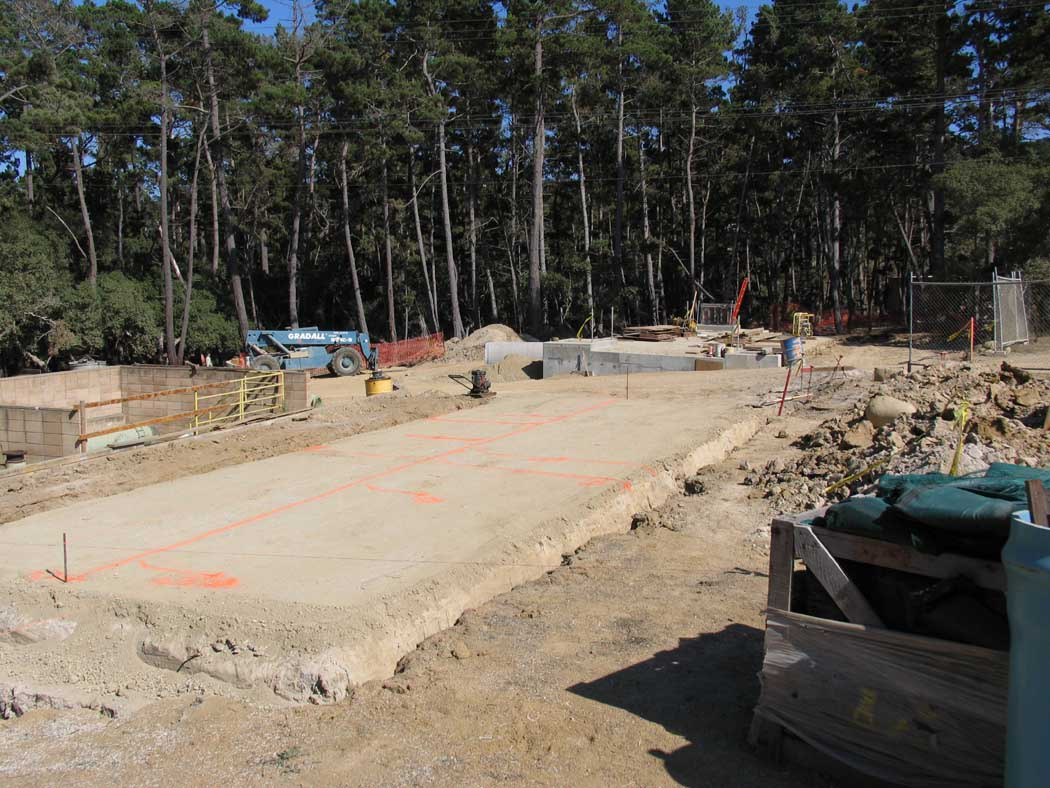
Contractor completed 70% of the anchor for the lining system along the perimeter at the top of the embankment. At the bottom of the reservoir monitoring drain lines were installed. The lines will be located underneath reservoir liner and will drain by gravity.
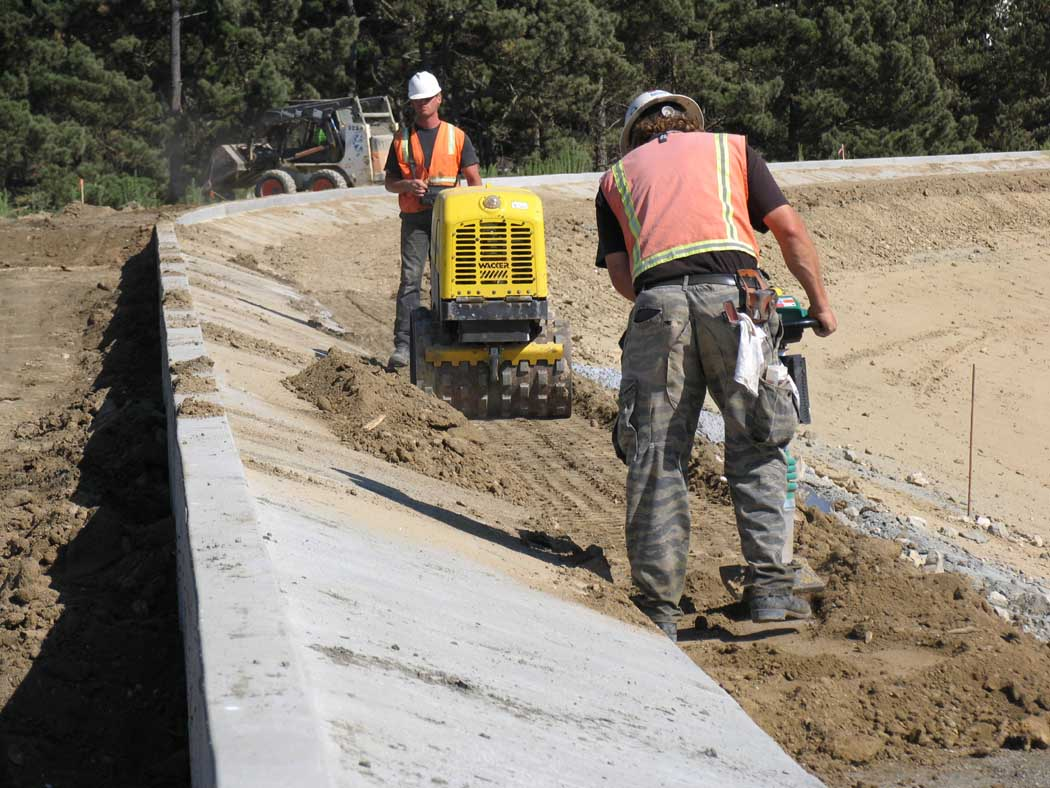
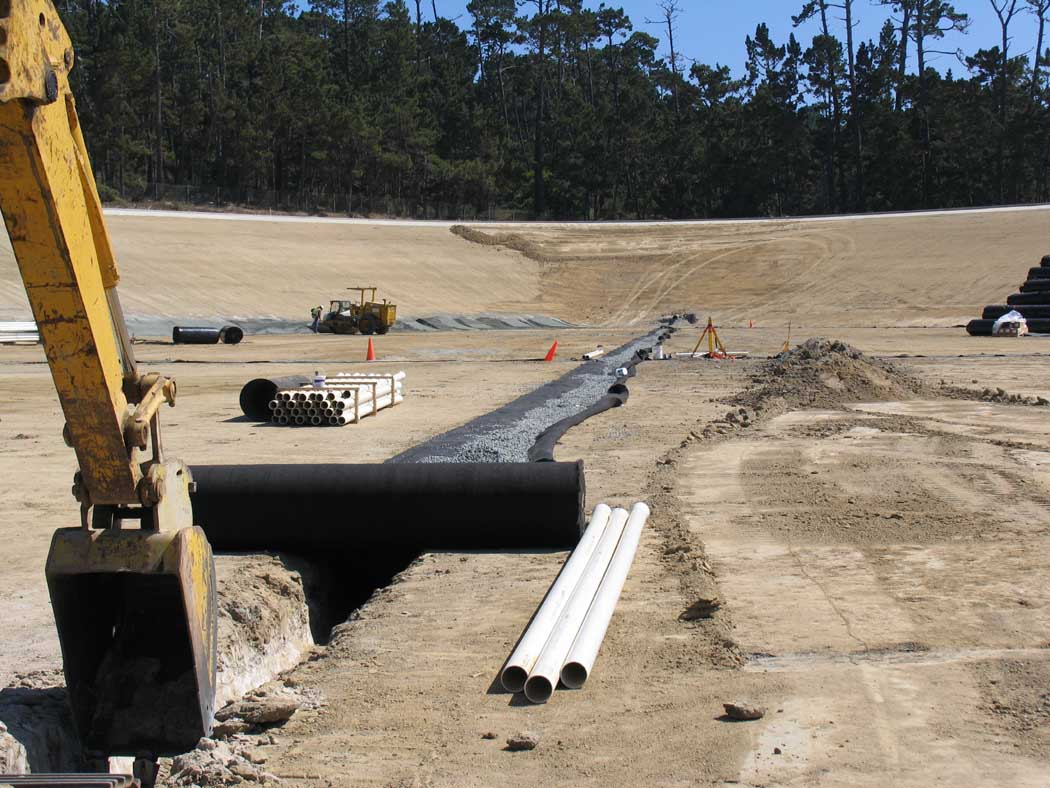
Installation of the hypalon liner (tan color) on top of geotextile matt (black color).
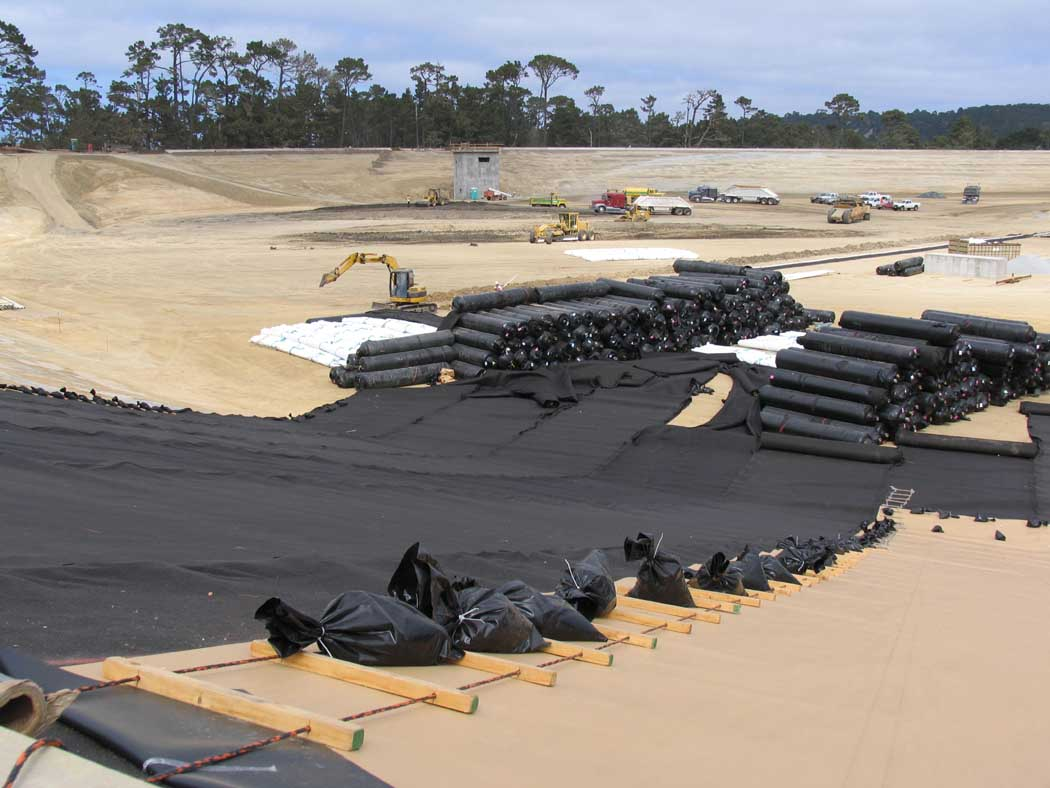
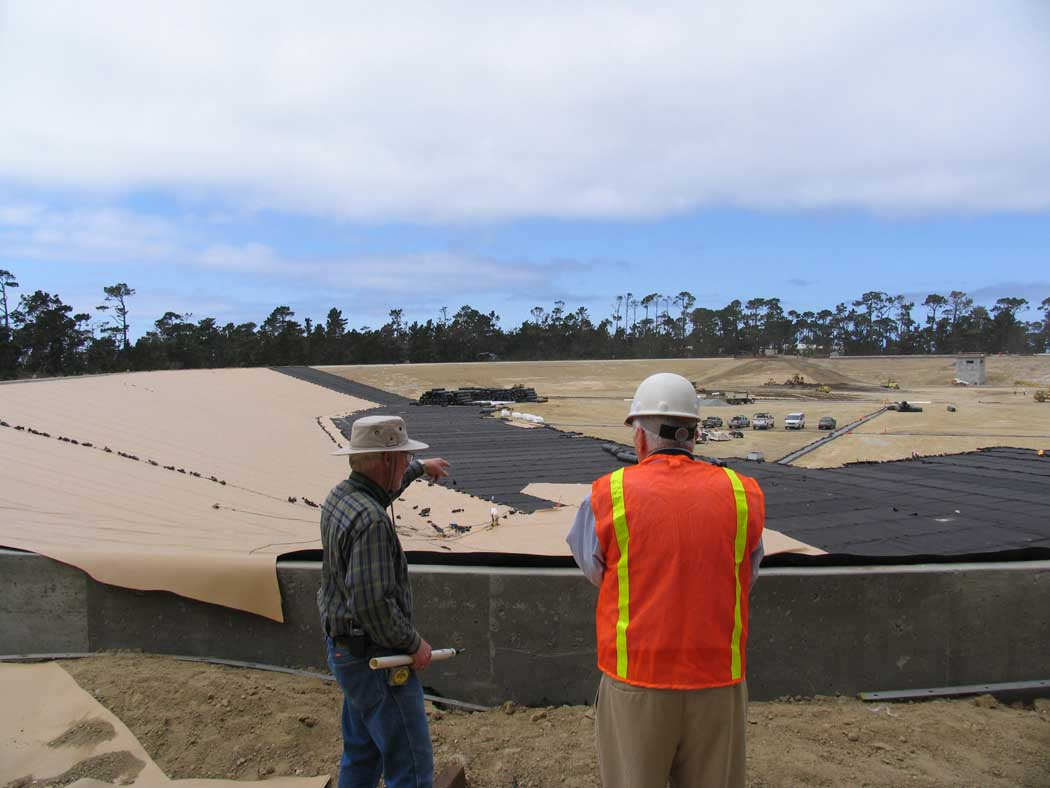
95% of the north embankment improvements was completed. Electrical conduits at the chemical building at treatment facility were laid out.
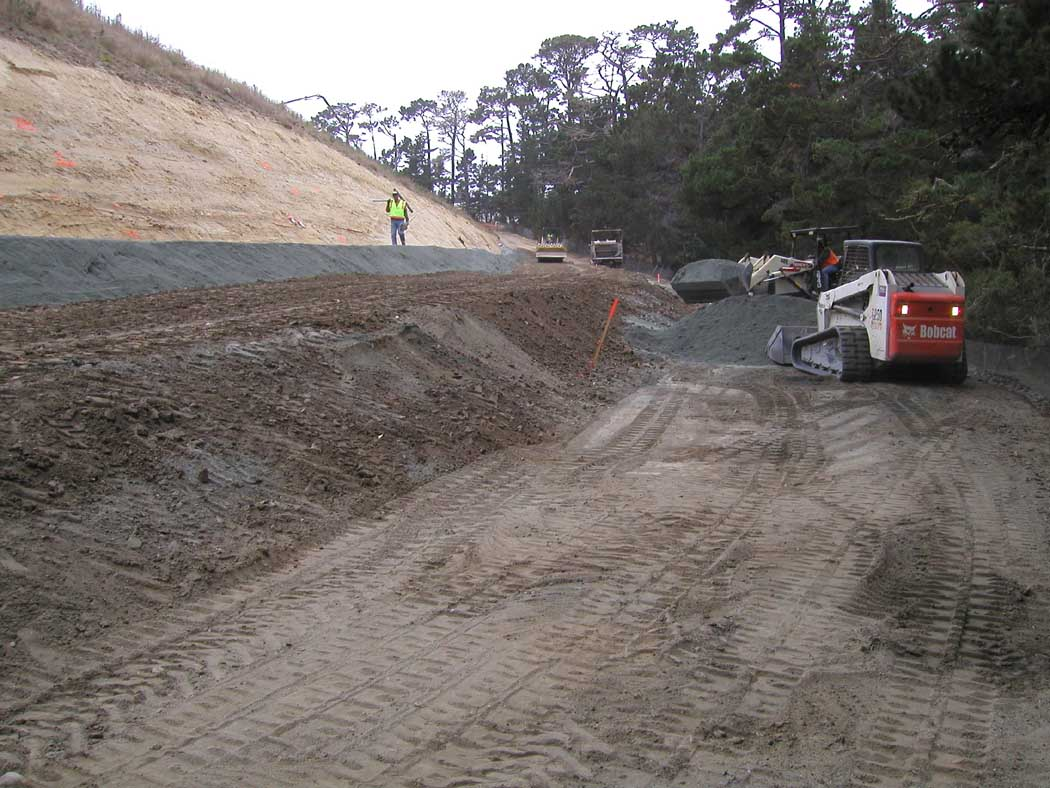

Concrete emergency dissipation structure located near Sawmill Gulch Creek was constructed. 24-inch emergency drain line was extended to the emergency dissipation structure installed.

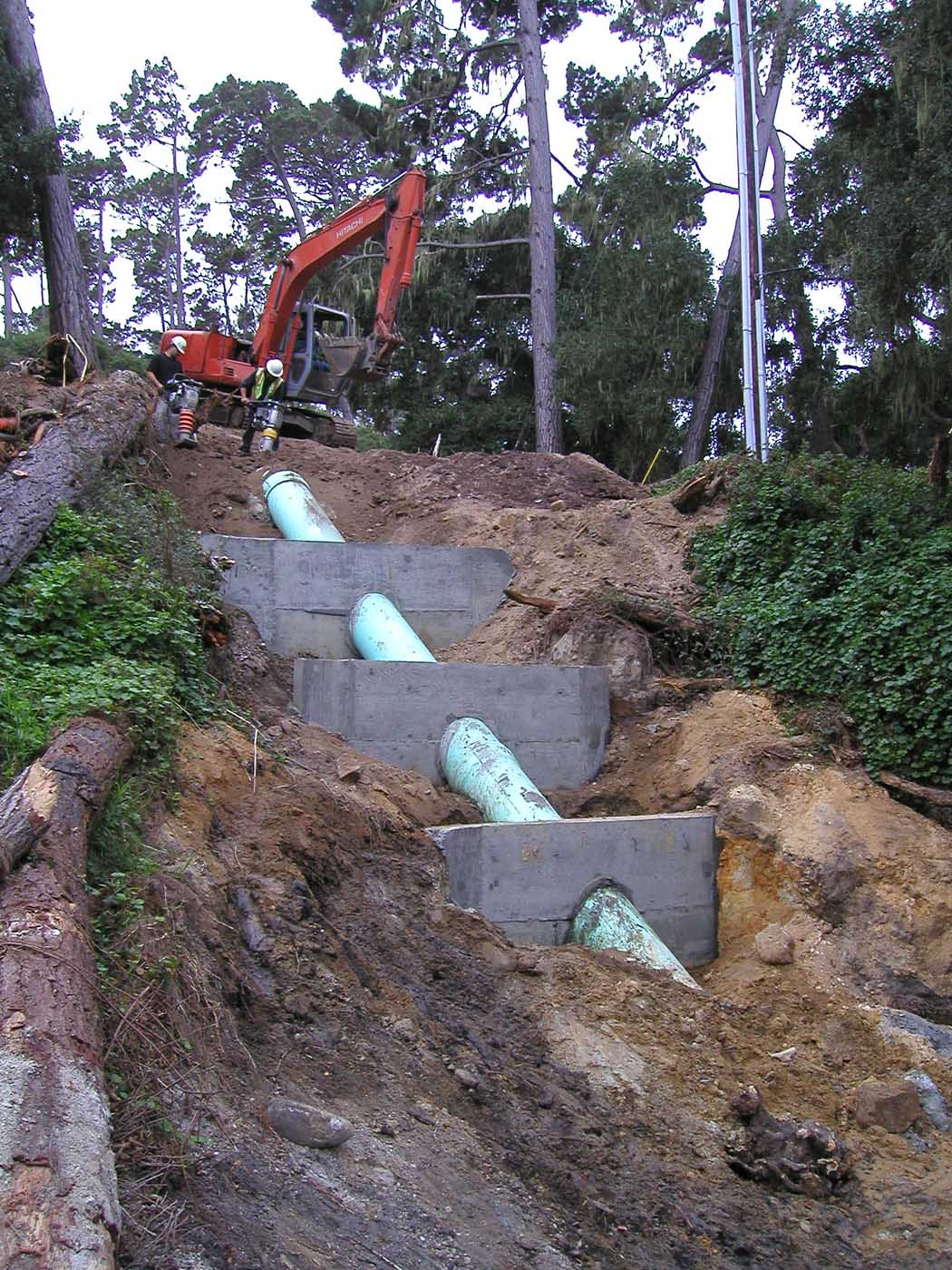
Inlet line which will supply recycled water produced by the CAWD Tertiary Treatment Plant to the reservoir was installed. The roof of the outlet structure was completed.
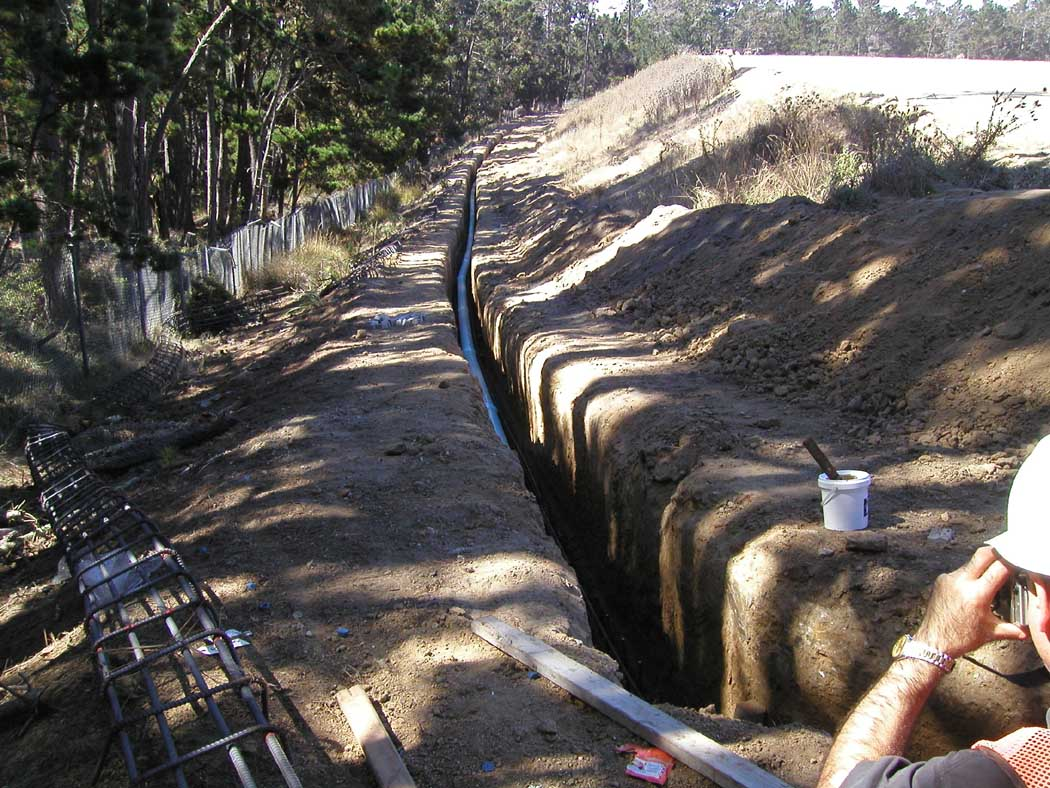

Reservoir 36-inch drain line installed and ready for cover. Second jack and bore pit with for 18-inch line.

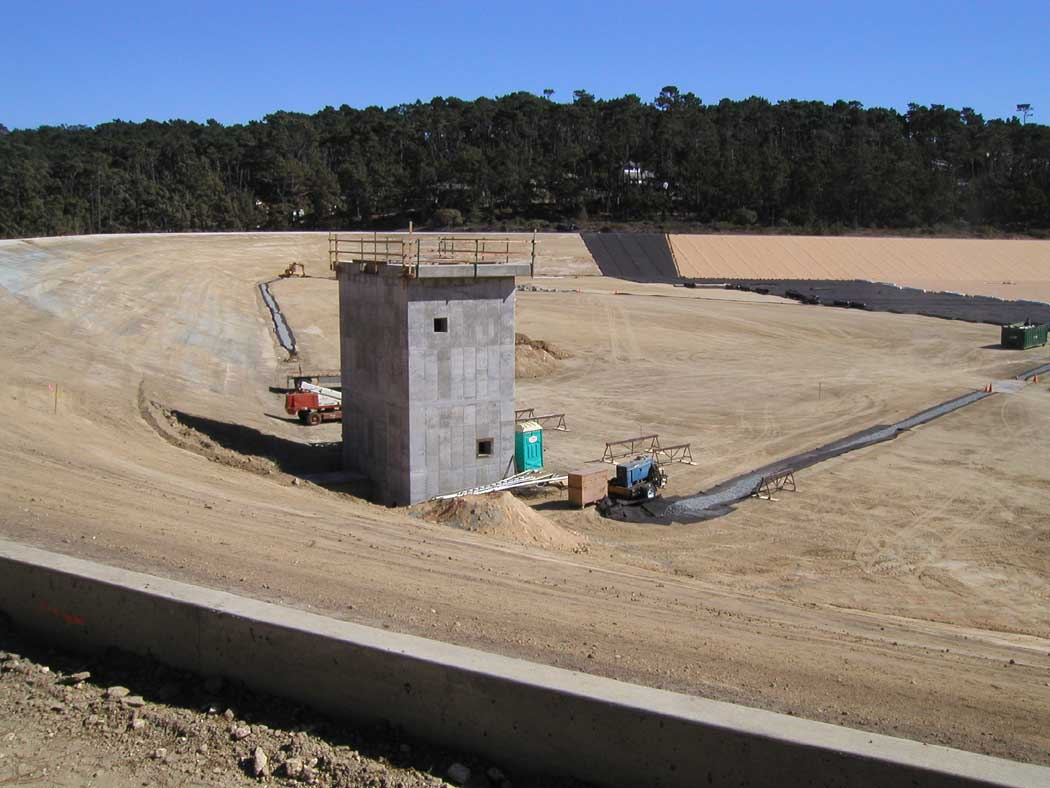
Twin (underwater) mixer base completed. DuPont Hypalon liner installation in-progress. Close-up of twin (underwater) mixer motors (minus propellers).

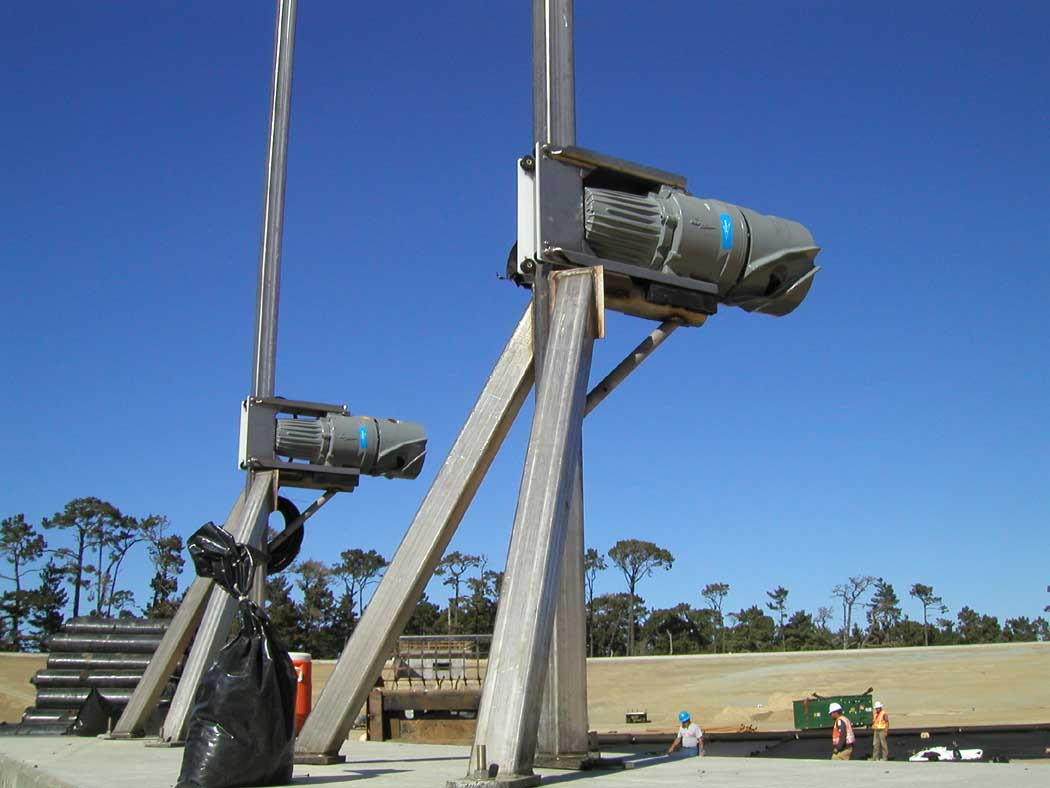
Air distribution (underwater bubbler) piping being installed. Installation of reservoir plastic liner nearing completion around the outlet structure.
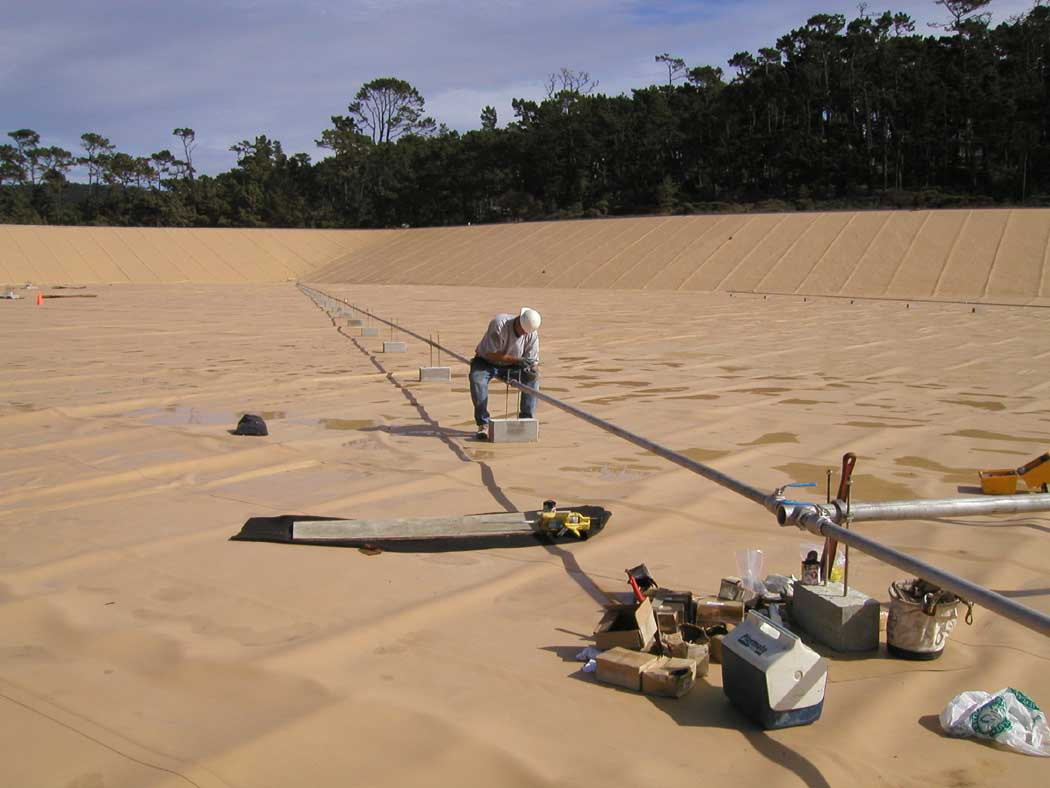

Bridgeway access to outlet structure in place. Final section of reservoir to be covered by plastic liner.

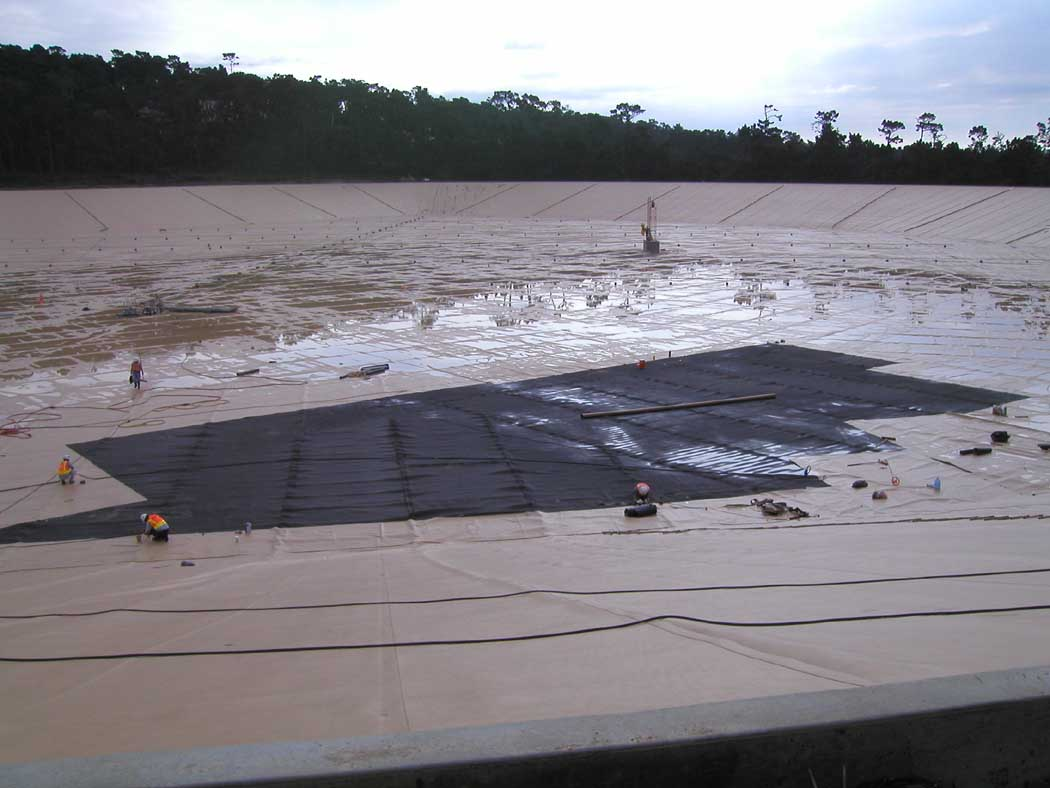
Twin submersible slow speed mixers with 78″ Diameter banana propeller blades. Chemical building masonry walls completed.
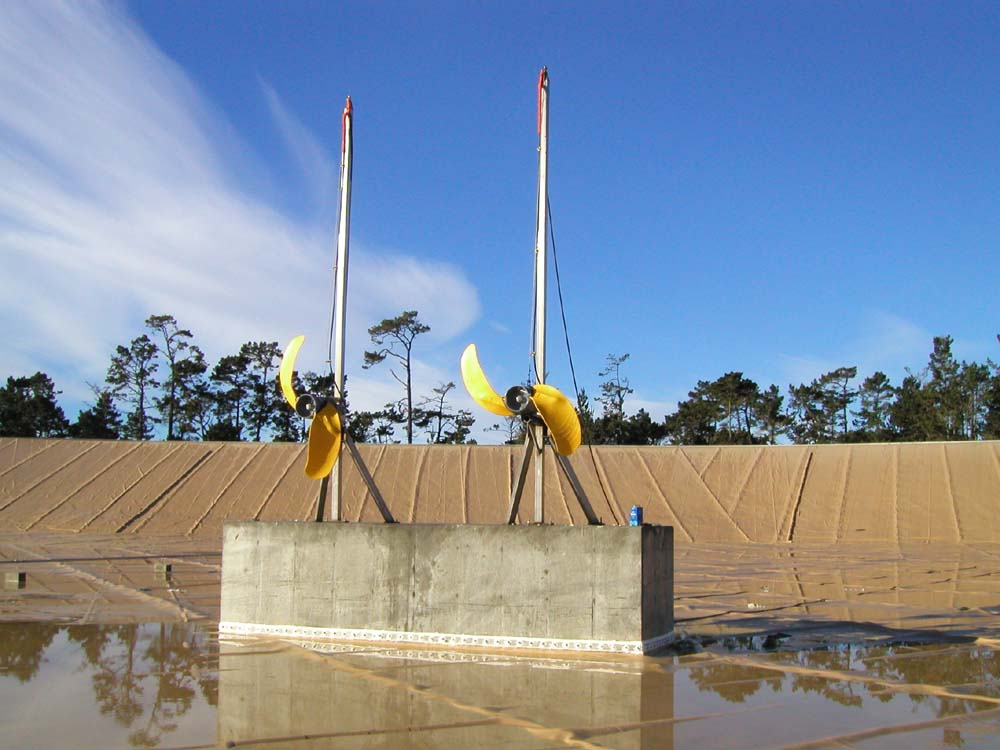

Interior details of chemical building. Lifting electrical equipment into the chemical building.

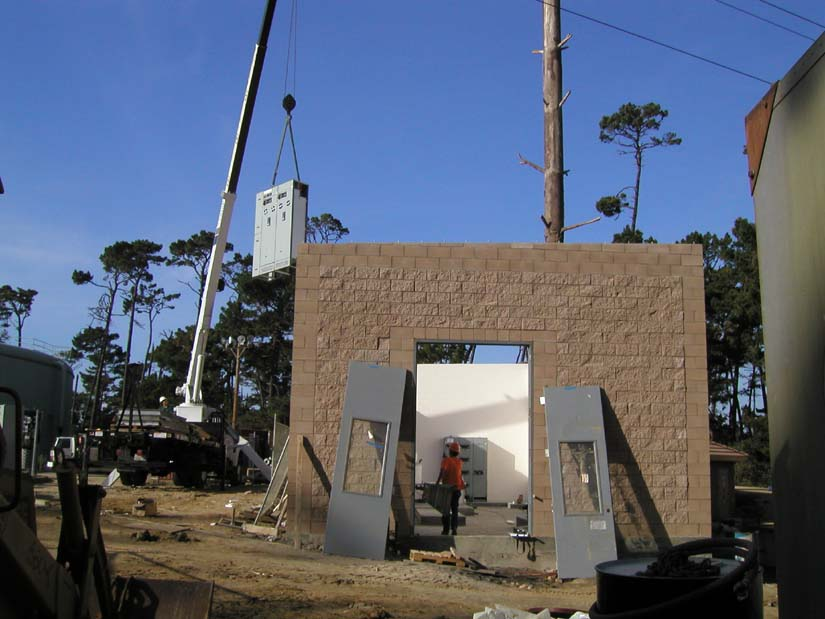
Roof installation for chemical building. The ResQ Disc is thrown like a Frisbee, the 12″ disc spins to unreel 100 feet of buoyant, 500lb. test line. Drowning victims can grab onto the line and be pulled to safety—without the danger of a rescuer jumping into the water. PBCSD Maintenance crew will carry one in each truck.
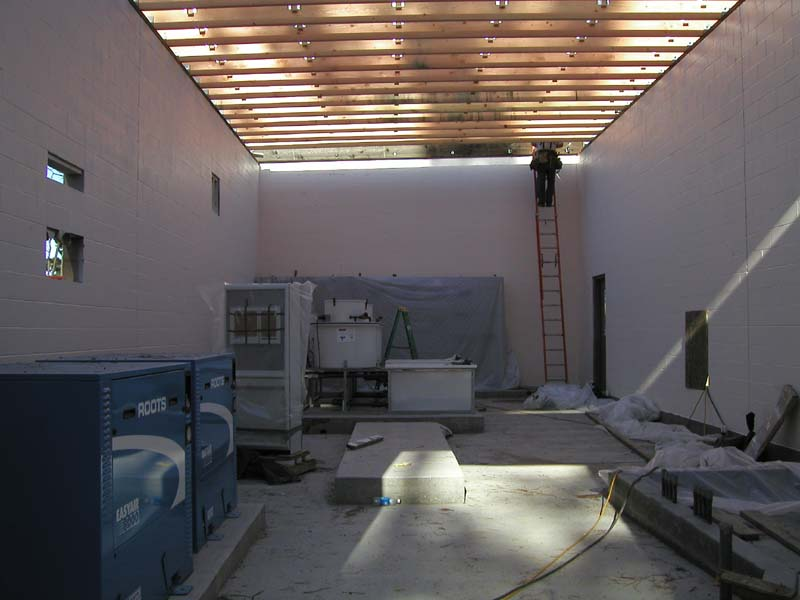
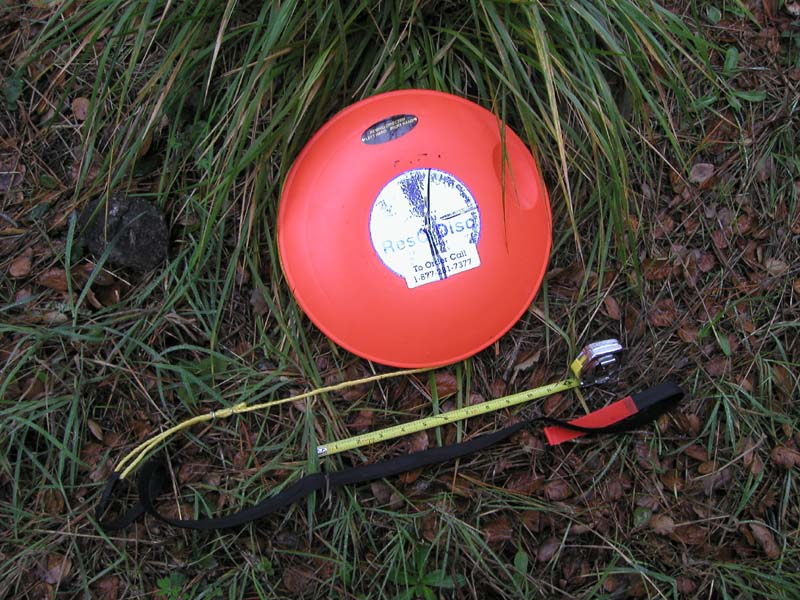
Submersible mixer electrical controls – mixers in background. Leak detection system monitoring manhole.


Landscaped Sawmill Gulch outlet structure. Strainers will be installed to remove algae from recycled water.
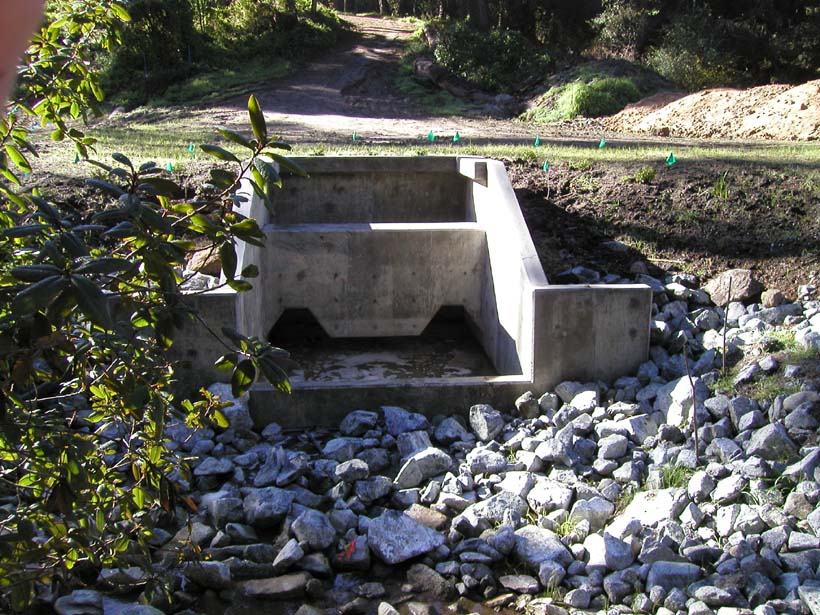
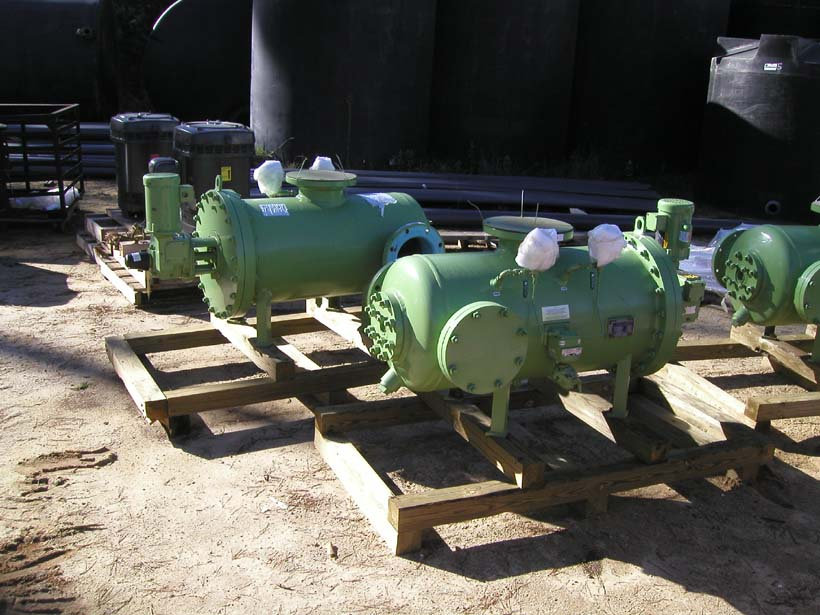
Bridge access to the Reservoir Outlet Structure. Motor control center in the chemical building.
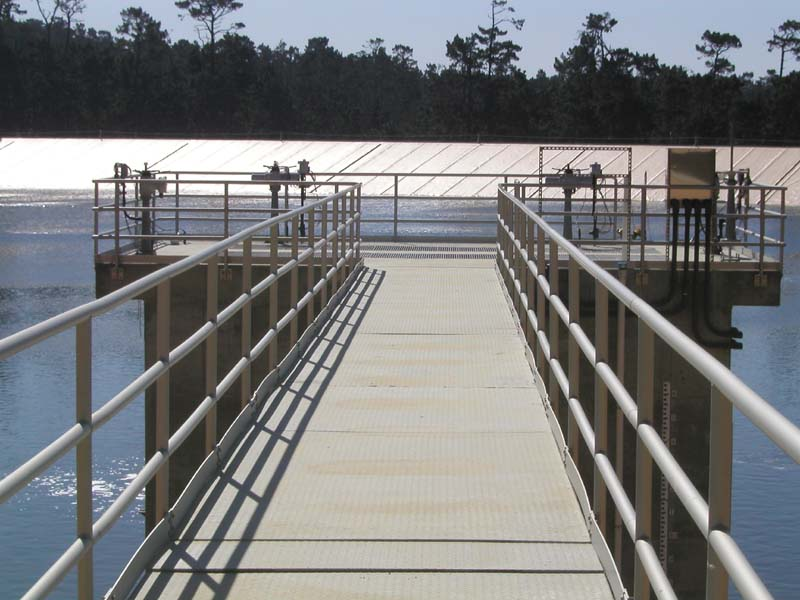
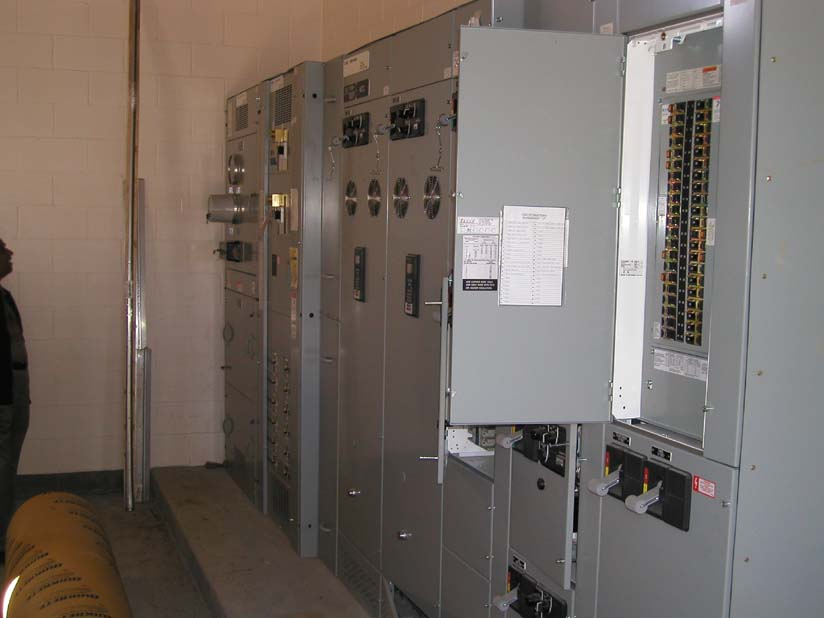
Reservoir has approximately 100 acre-feet of recycled water. Air diffusers (bubblers) in operation.
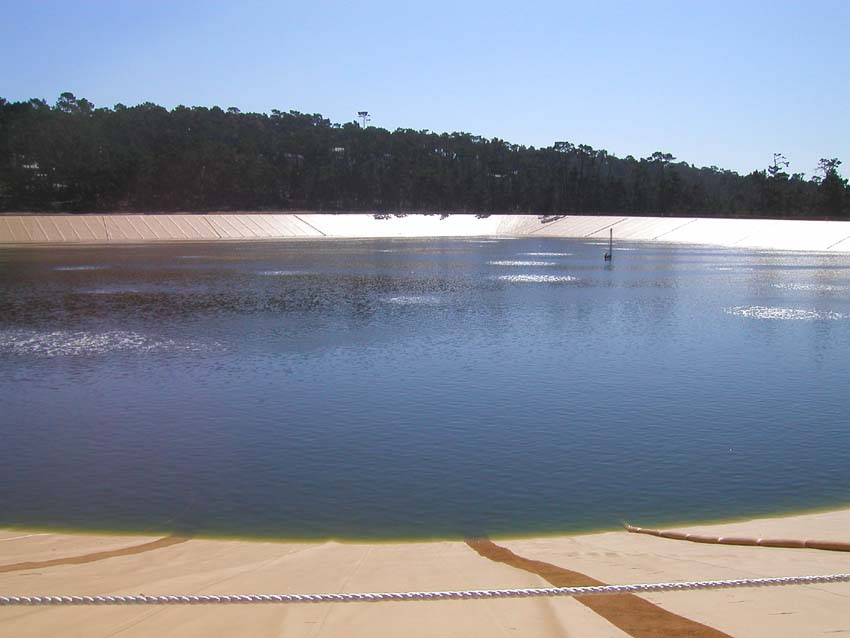
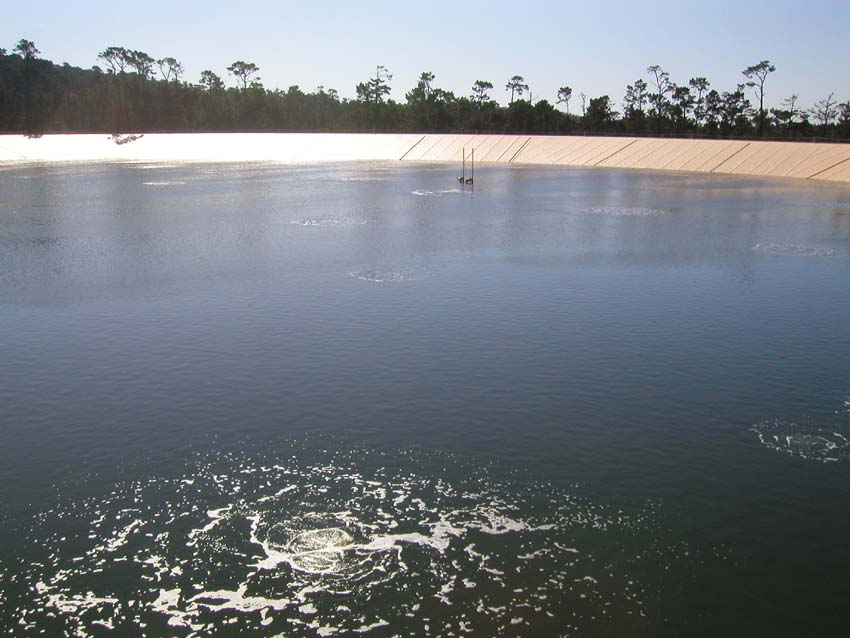
As water level rises the submersible mixers are almost under water. Outlet structure in background. Life ring and safety rope station. 34 such station are located around the Reservoir.


As of March 17th water level has risen as recycled water continues to be pumped into the Reservoir. First signs of wildlife enjoying the Reservoir.
